What is a single coffee bean? The difference between a single coffee bean and a blended bean is the best single coffee bean ranking recommendation
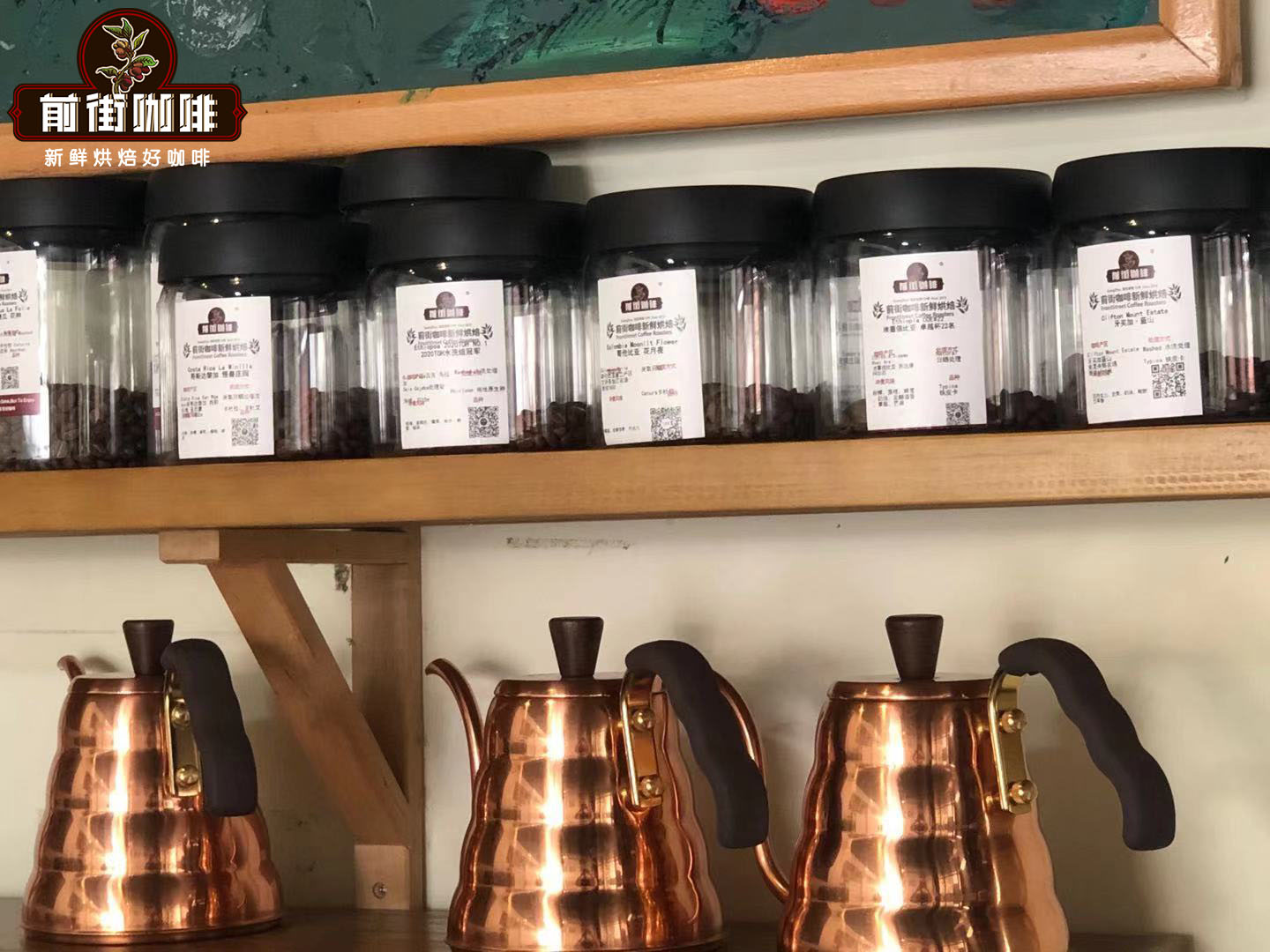
Professional coffee knowledge exchange more coffee bean information please follow the coffee workshop (Wechat official account cafe_style)
With the development of the boutique coffee market, the emergence of many coffee shops has made more and more people understand the charm of individual coffee and hand-brewed coffee, but Qianjie Coffee realizes that there are also many new coffee fans who do not know how to choose individual coffee beans that suit their own taste. The coffee flavor is mainly divided into three categories, then the next article Qianjie Coffee is mainly based on these three categories of flavor coffee to recommend individual coffee bar.
What are individual coffee beans?
Single coffee beans refer to pure coffee produced from a single country of origin and brewed and drunk without milk or sugar. Individual coffee has strong characteristics, special taste, or fresh and soft, or mellow smooth, high cost, so the price is more expensive.
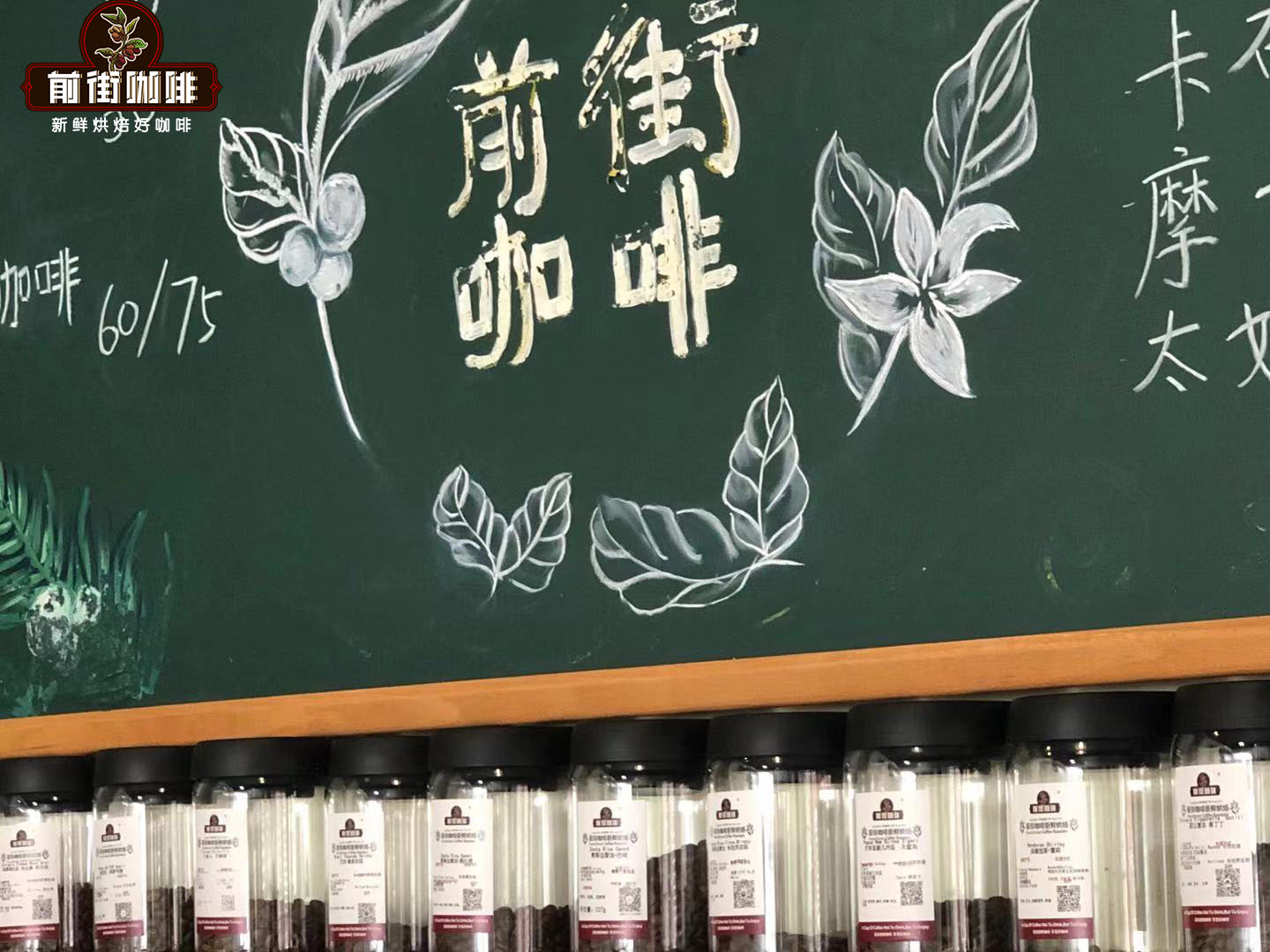
For example, the more famous individual coffees in Qianjie coffee shops are Jamaica Blue Mountain Coffee, Ethiopian Yega Chuefei Coffee, Indonesian Manning Coffee, and so on, all of which are named after the origin of coffee beans. And these coffee beans also represent the flavor of the producing area; secondly, individual coffee can be traced back to the manor and stories in the producing area, such as the planting conditions of the manor, the level of treatment, and so on, to ensure the flavor and quality of the coffee beans. therefore, there will also be some relevant newsletters on each pack of coffee beans in Qianjie coffee.
What is the flavor of producing area?
Then what is the flavor of the producing area? coffee fans all know that coffee is a crop, so its quality and flavor will also be affected by many factors, such as altitude, climate, soil, planting technology, raw bean treatment and so on. And coffee is only a general term, in which a variety of varieties are subdivided, and the most commonly used individual coffee beans belong to Arabica species, in which detailed coffee types are subdivided, such as tin pickup, bourbon and so on. This will affect the flavor of coffee beans from the source, which is what Qianjie coffee often calls the flavor of the producing area.
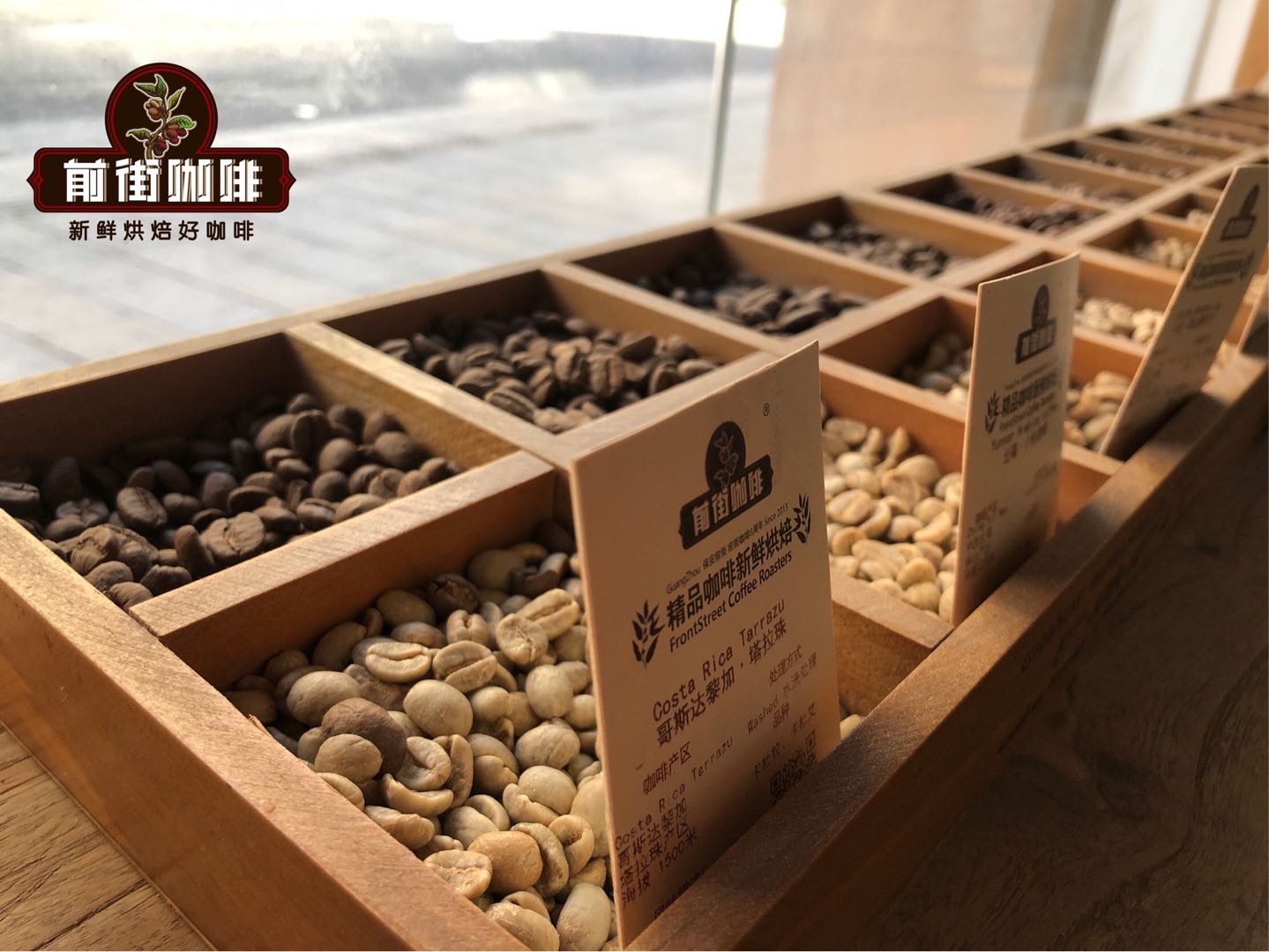
The flavor of the three major coffee producing areas in the world
Qianjie Coffee also mentioned above that the flavor of coffee can be divided into three categories, and these three categories of discrimination can be divided into three major coffee producing areas, that is, Asia, Africa and Latin America, all of which have their own characteristics. For example, Asian coffee has a mellow flavor based on spices and herbs, while Africa has a citrus lemon flavor with better acidity and a clean and bright taste. The flavor of coffee in Latin America is a combination of the first two, more balanced, but with obvious nutty cocoa flavor, so the flavor of coffee can be subdivided by these three major producing areas. Then Qianjie Coffee will share the typical individual coffee in these three major producing areas.
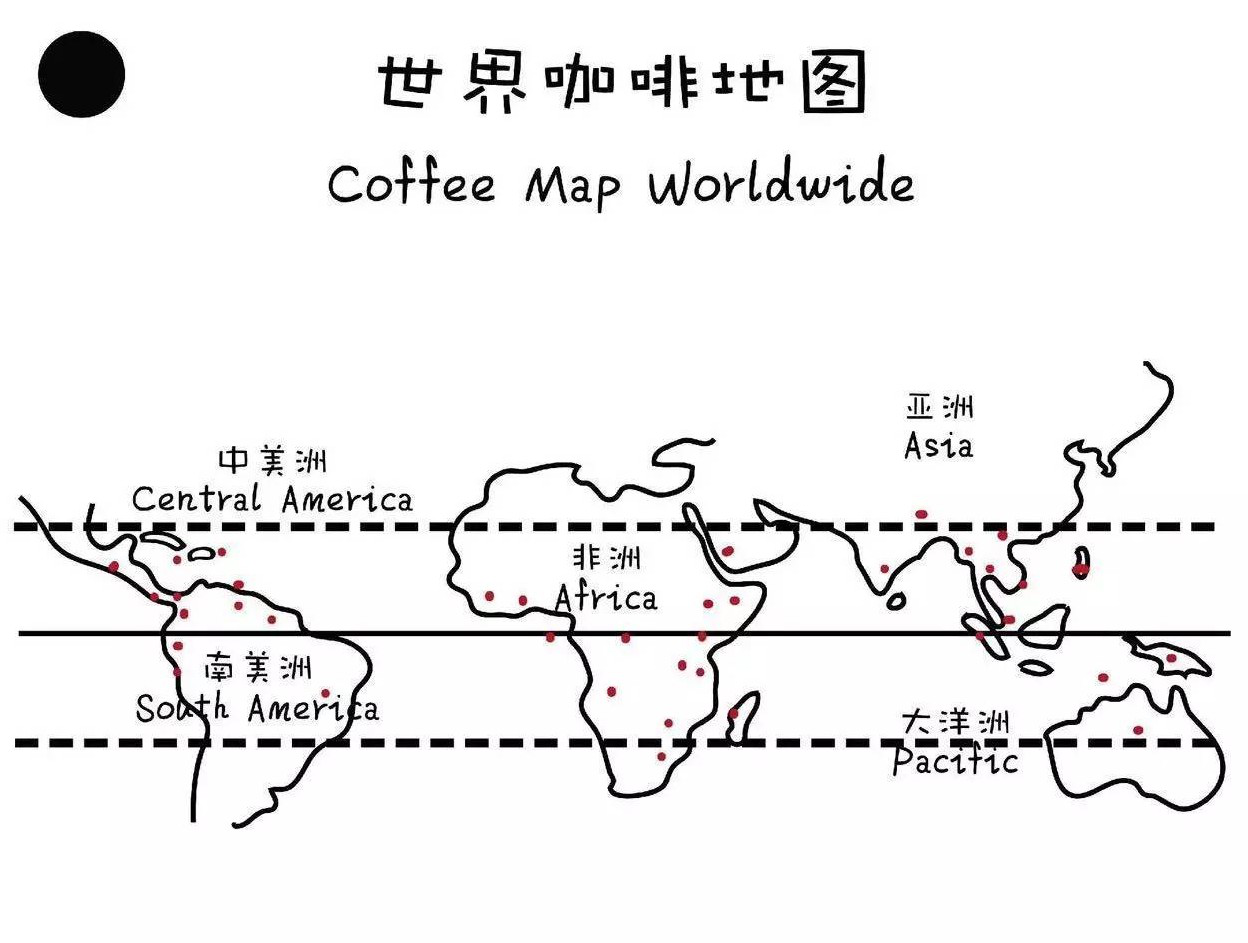
Recommendation of individual coffee beans in Asia
As Qianjie Wen said, the coffee flavor in Asia tends to be spicy, herbal, and mellow, so it is very popular with coffee fans who like the mellow taste. For example, Indonesia Manning in the Qianjie coffee shop is definitely the representative of Asian flavor. It is like coffee beans from Yunnan, China, which continue to appear in the boutique coffee market. In addition, the coffee beans of Papua New Guinea, known as the Little Blue Mountains, can also be called the representative of Asian coffee. Then Qianjie Coffee will recommend the coffee beans from these three producing areas.
Coffee producing areas in Indonesia
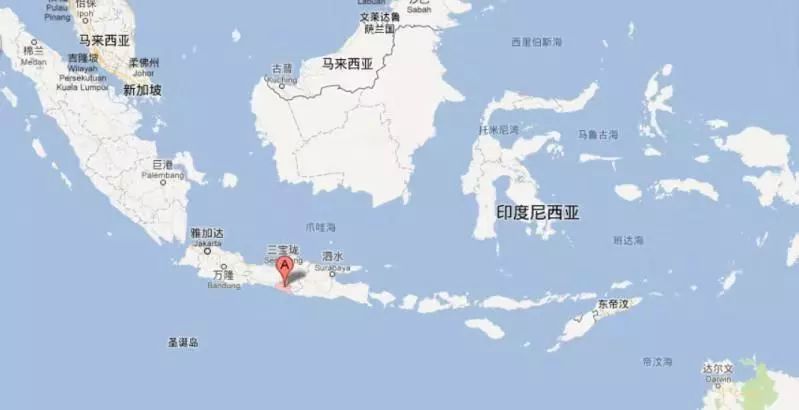
At present, there are five Indonesian mantenin coffee beans in Qianjie coffee shop. Next, Qianjie will introduce the characteristics and treatment of these five mantenin coffee respectively.
Indonesian coffee treatment-wet planing treatment
Indonesia's Mantenin is famous for Qianjie Coffee because the local wet planing treatment is due to the fact that the local weather in Indonesia is often dominated by Rain Water, with continuous typhoons, unable to achieve the good weather needed for the sun, and the local economy is not good, so it is also impossible to use the more expensive method of washing.
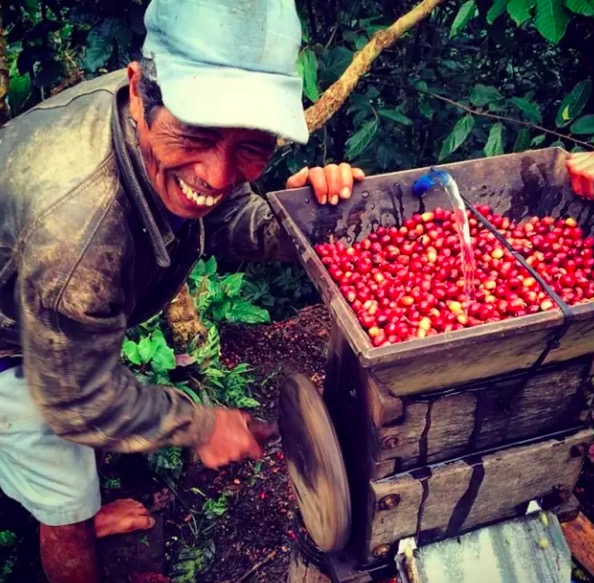
As a result, the wet planing method with local characteristics is derived. Now the development of coffee in Indonesia is no longer as poor as it used to be, and there are many manors and companies that have certain conditions to use the washing method, but why have they not abandoned the wet planing method? therefore, Qianjie Coffee feels that wet planing is a factor that has brought Mantenin Coffee to the world, because when it comes to Mantini coffee, coffee fans will think of the wet planing method, which shows that they already complement each other.
Qianjie Coffee Indonesia Gold Manning Coffee beans
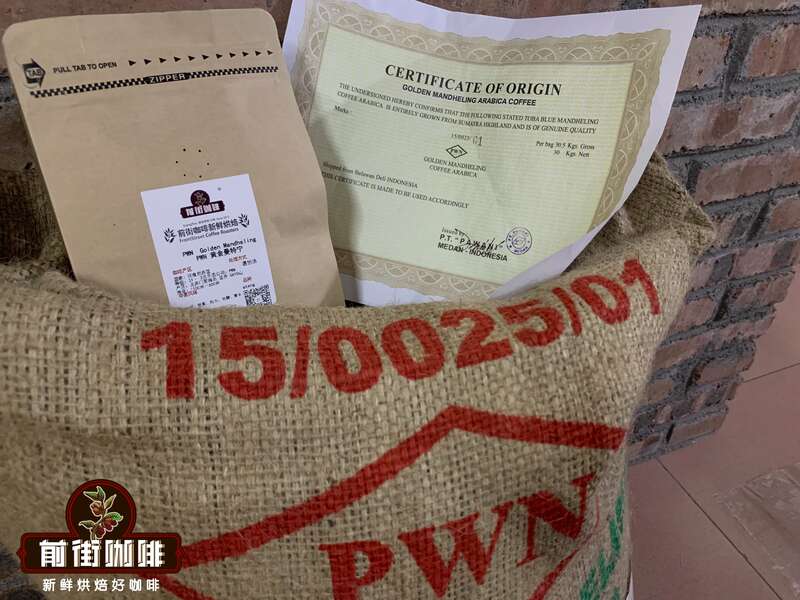
Country: Indonesia
Production area: Mount Aceh, Sumatra
Altitude: 1100-1600m
Breed: Ateng
Treatment: wet planing
Flavor: Toasted toast, Nutty, Pine, Caramel, Herbal
Front Street This Gold Mantinin is the latest product launched by PWN in recent months. Different from the previous PWN Gold Mantinin, the latest batch of Mantinin is produced in Mount Achigayo of Sumatra, while the previous one is produced in Lake Tava of Sumatra. According to Front Street Cup, this latest Gold Mantinin coffee is brewed and found to be more roasted toast flavor than the previous Gold Mantinin. Therefore, it will be a little more mellow in taste.
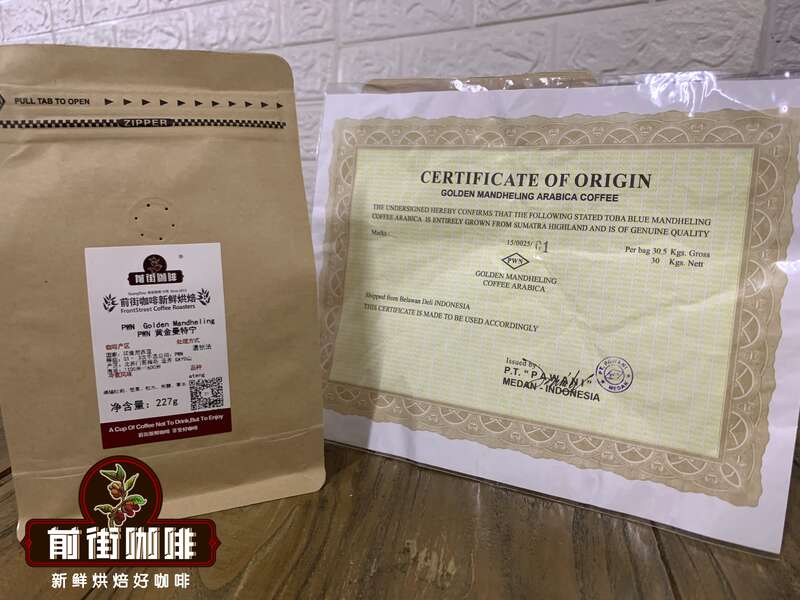
And the specification standard of Golden Manning is more than 18 mesh, and there are less than 3 defective beans (300g raw bean samples), which belongs to the highest grade G1, dark green and neat flat beans. After strict screening of Golden Mantenin, Qianjie Coffee not only does not have the unique soil flavor of ordinary Mantenin, but also tastes cleaner and brighter.
Front Street Coffee Indonesia Lin Dong Manning Coffee beans
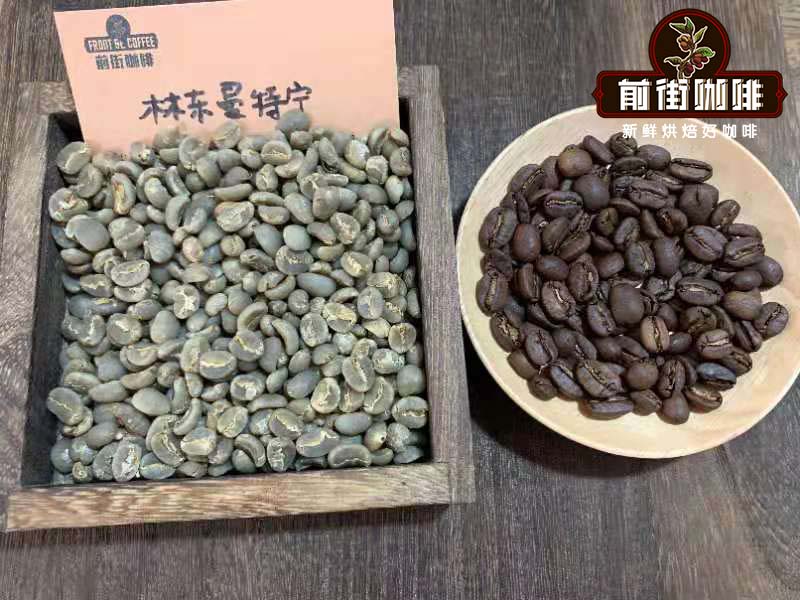
Country: Indonesia
Producing area: Sumatra (Lindong)
Altitude: 1100-1600m
Variety: iron pickup, Kaddura
Treatment method: wet planing method
Flavor: baked toast, nuts, caramel, pine, herbs
Lin Dong Mantenin is produced in the Lindong Mountains of north-central Sumatra, near Lake dopa. This is where the entry-level rations of Qianjie coffee in Indonesia's Mantenin producing area come from. Lin Dong Mantning also uses a unique wet planing method, which has the characteristics of low sour taste and high mellow degree.
Qianjie Coffee Indonesian Tiger Mantenin Coffee beans
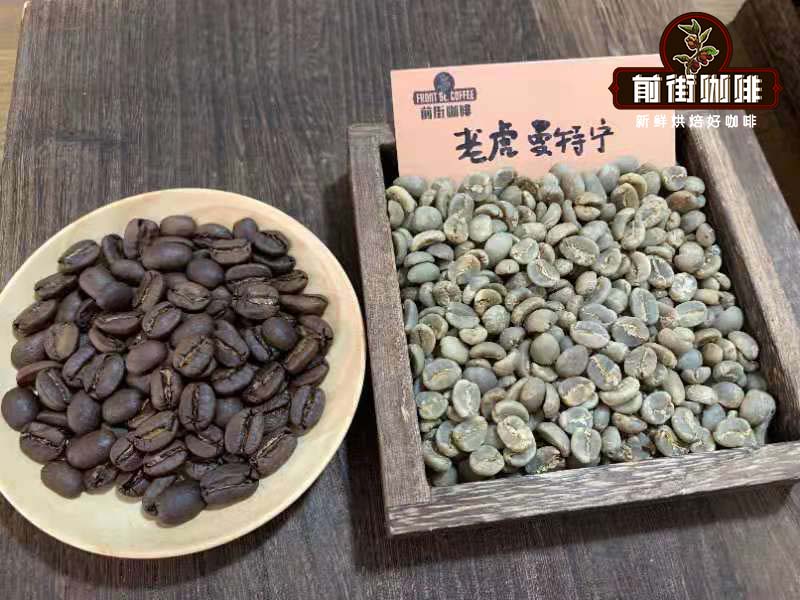
Country: Indonesia
Producing area: Sumatra
Altitude: 1500m
Variety: Kaddura, Iron pickup, Sidikalong
Treatment method: wet planing method
Flavor: cream, dark chocolate, nuts, balanced taste
Tiger Manning can only be called tiger Manning if the defect rate is less than 4%. Because the main varieties of tiger Mantenin are Kaddura and tin pickup. Kaddura has sour citrus and lemon flavors, while Ironpika has a long, sweet finish, giving Tiger Man a uniform taste and high cleanliness.
Qianjie coffee Indonesia aged Mantenin coffee beans
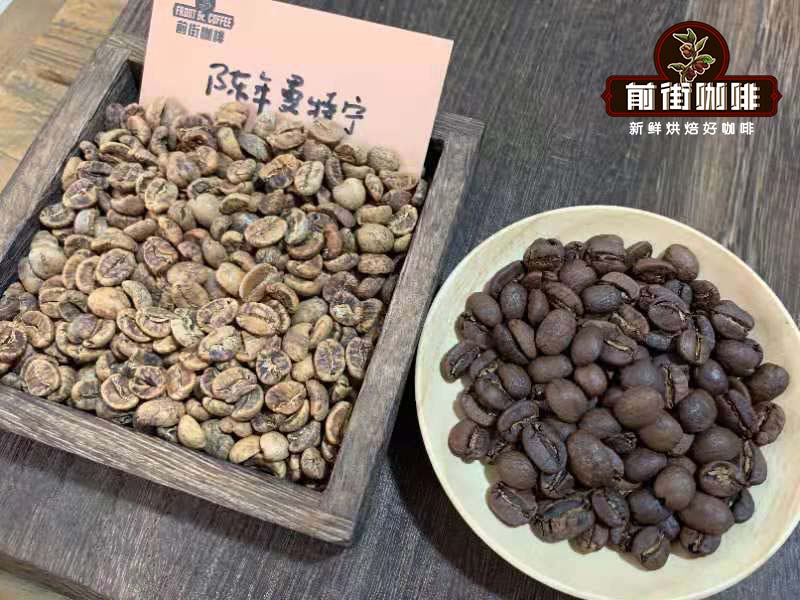
Country: Indonesia
Origin: Sumatra
Altitude: 1500m
Breeds: Kadura, Kaduai
Treatment: wet planing
Flavor: Cooked puree, caramel, herbal, chocolate, low acidity.
Aging refers to the aging of mantling beans, which naturally ages the beans by prolonged storage (usually 2 - 3 years), resulting in a weakening of coffee acidity and a change in color of the beans. And the storage environment of aging treatment must have cool, ventilated conditions to prevent mildew and moisture. Because the storage environment is darker and longer, improperly handled aged coffee is always difficult to remove a complex smell such as musty or commonly known as sack or leather.
Front Street Coffee Indonesia Sun-baked Mantinen Coffee Beans
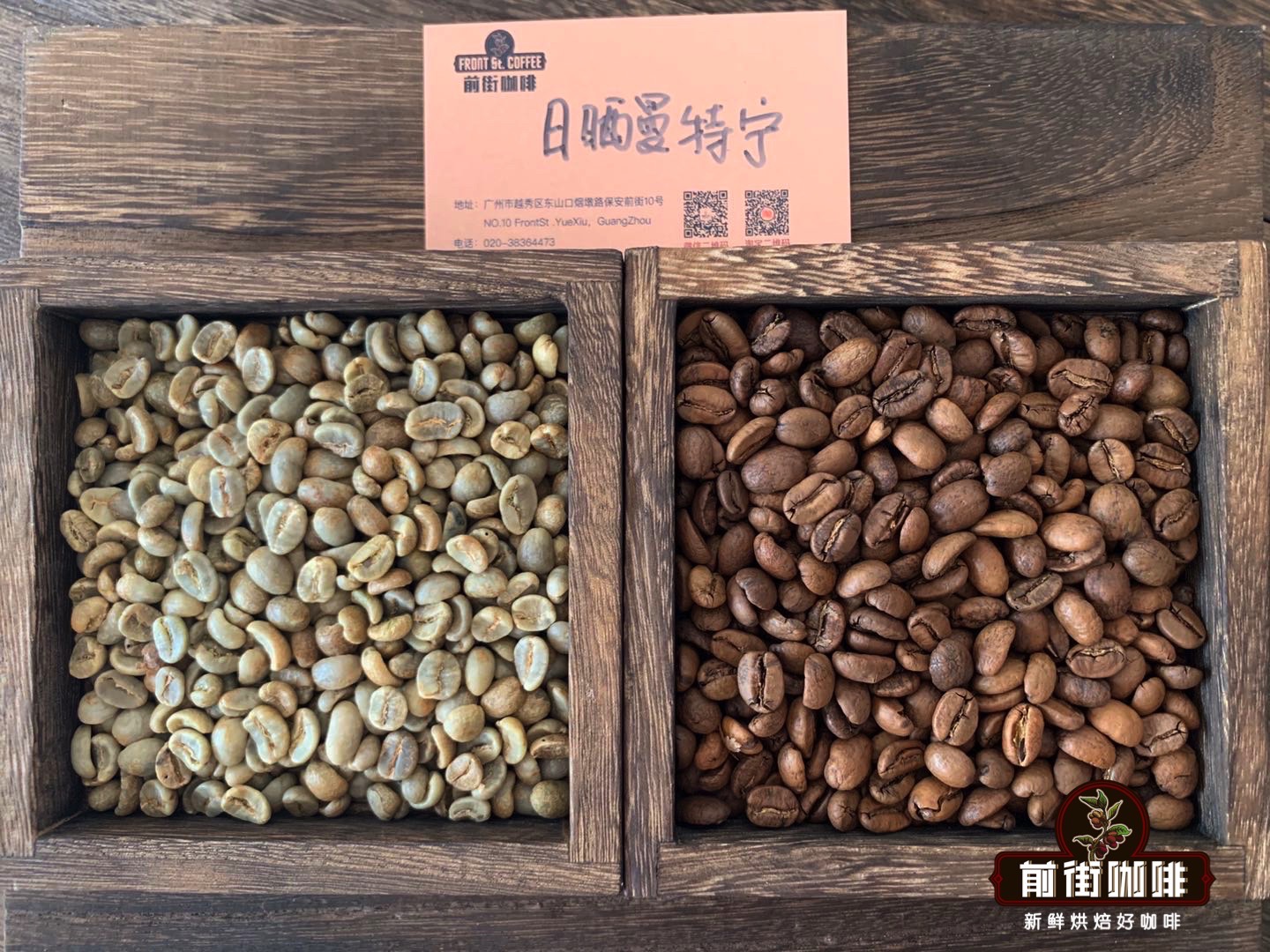
Country: Indonesia
Production area: Sumatra (Toba Lake)
Altitude: 1000-1700m
Breed: Bourbon, Iron Pickup
Treatment method: sun treatment
Flavor: Melon, fermented, mango, tropical fruit, peach
The biggest difference between this Mantelin and the previous Mantelins is the use of sun treatment. This coffee bean comes from Wahana Manor, a relatively young estate in Indonesia, but its development potential cannot be underestimated. Solarization treatment is still quite challenging in Indonesia. Indonesia's climate is hot and humid, and the solarization time is unstable. It is precisely because of this factor that there is a unique wet planing method with local characteristics. However, mantelin coffee on the market now uses wet planing treatment, and the appearance of sun treatment mantelin can also change the taste.
Yunnan Coffee Production Area, China
Next, we will introduce coffee beans from Yunnan Province. The history of coffee planting in Yunnan Province has been very long, but it has not been long since it entered the fine coffee market. Therefore, Qianjie Coffee thinks that coffee in Yunnan Province has great development potential. Therefore, a coffee estate has been established at the junction of Baoshan, Yunnan Province and Myanmar, specializing in planting Yunnan coffee beans of iron card varieties. Then Qianjie Coffee will introduce coffee beans produced in Qianjie Coffee Estate.
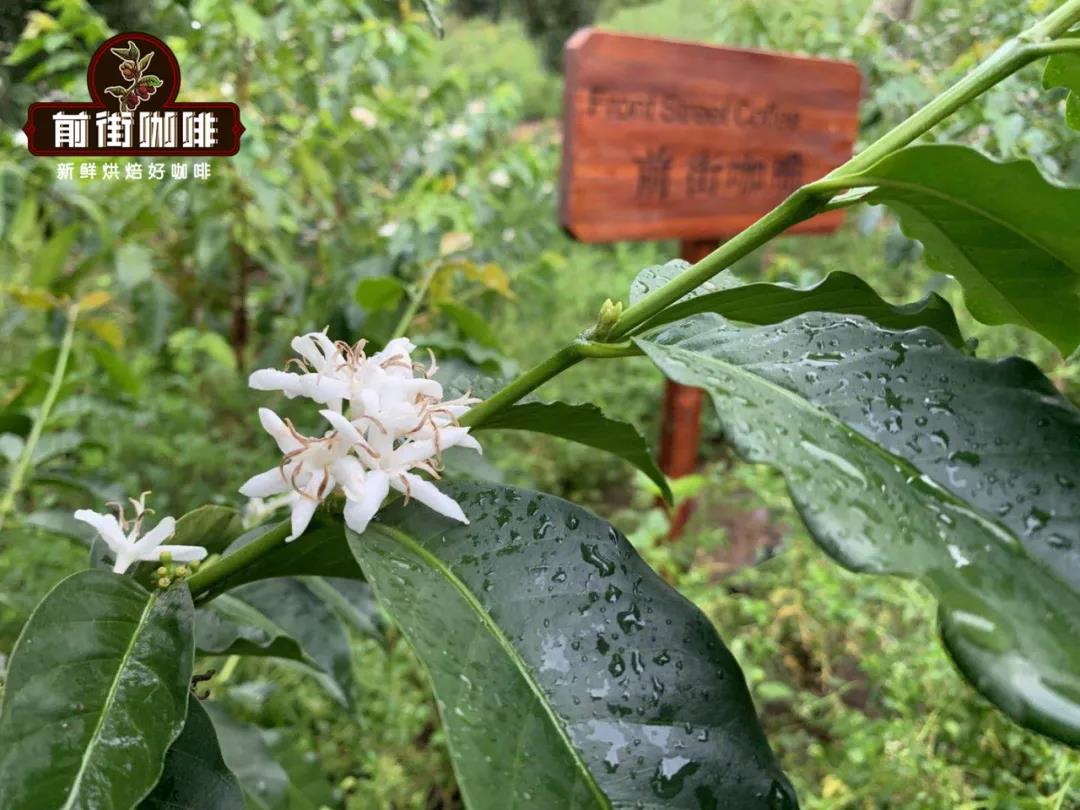
Qianjie coffee Yunnan Huaguoshan coffee beans
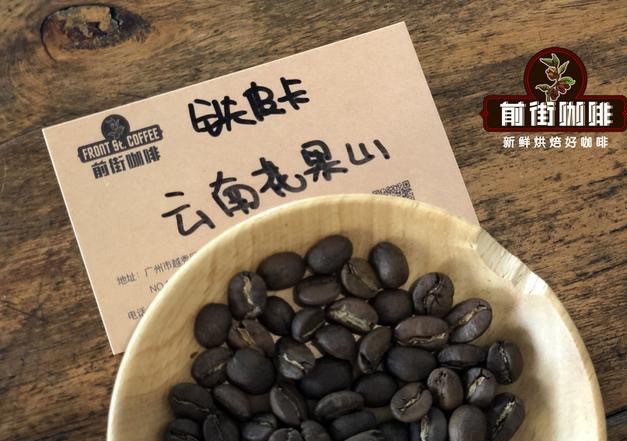
Country: China
Producing area: Baoshan, Yunnan
Altitude: 1450-1550m
Variety: iron pickup
Treatment: washing treatment
Flavor: citrus, nuts, plums, melon and fruit, brown sugar, black tea
Qianjie Coffee the difference between Yunnan Huaguoshan coffee beans and Yunnan Xiaoguo beans is that Huaguoshan is a variety of iron pickup, while Yunnan Xiaoguo is Katim, in fact, these two beans can be called small-grained coffee, but because the acid of Tippi card flower fruit is softer and richer, it is specially chosen to distinguish the two varieties of beans in the name of Huaguoshan.
Qianjie Coffee Yunnan small Coffee beans (rations beans)
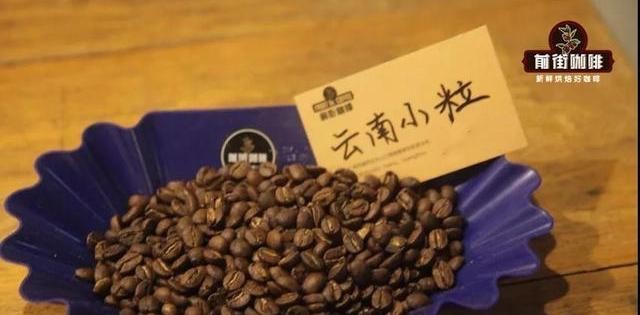
Country: China
Production area: Baoshan, Yunnan
Altitude: 1200m
Breed: Katim
Treatment method: washing treatment
Flavor: Herbal, nutty, chocolate, caramel
Yunnan Arabica coffee refers to Arabica coffee cultivated in Yunnan Province. Coffee is a small evergreen tree of Rubiaceae, originating in Africa. At present, coffee is mainly cultivated as a beverage plant. Coffea arabica cultivated in yunnan, china, traditionally refers to a mixed population of bourbon and ferruginous varieties.
Coffea arabica is the most widely cultivated species in the genus Coffea. Because of its strong cold resistance and short-term low temperature tolerance, it can grow in the mountains with an altitude of 2100 meters in tropical areas, but it is not drought tolerant; the branches are relatively fragile and not resistant to strong wind; the disease resistance is relatively weak; the fruit is easy to fall off after maturity; the processed coffee tastes mellow and contains low caffeine components.
Qianjie Coffee Yunnan Sunlight Catim Coffee Bean
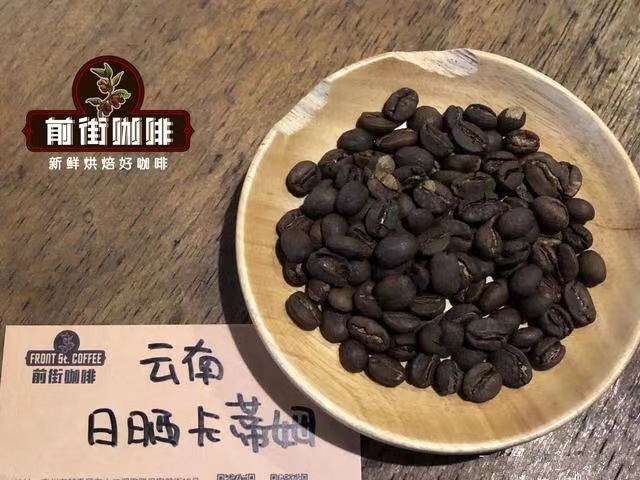
Country: China
Producing area: Yunnan (Baoshan)
Altitude: 1450-1550m
Variety: Katim
Treatment: red cherry sun treatment
Flavor: caramel, dried fruit, cocoa, dark chocolate, herbs, wood
At present, most of the plants in Yunnan are Katim, which is a hybrid of Kaddura and Robsta, a branch of the bourbon line in the Arabica species. The reason for planting this variety is that Katim has the Robusta gene, so it is better than a single old variety in disease resistance, and the yield is good. Compared with the delicate old variety, the disease resistance is poor and the yield is low. Farmers naturally prefer to plant Katim. So now there has been a Katim wind in Yunnan.
Coffee producing area of Papua New Guinea
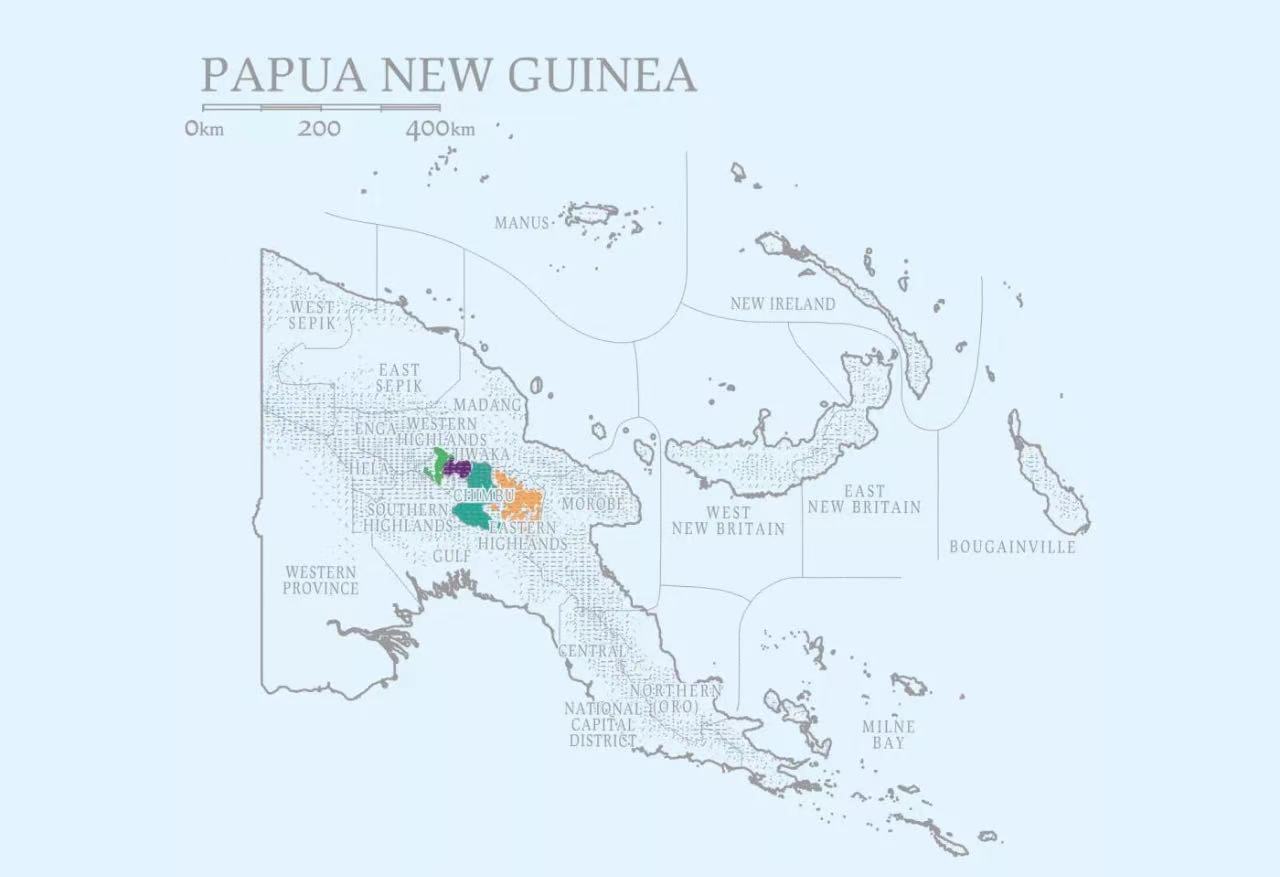
Next, Qianjie Coffee will introduce the Little Blue Mountain Coffee from Papua New Guinea from Asia! Hearing the name Blue Mountain Coffee, I believe all coffee fans have lifted their spirits and are very curious about where the Little Blue Mountain coffee beans are sacred.
Qianjie Coffee (Little Blue Mountain, Papua New Guinea) Coffee beans
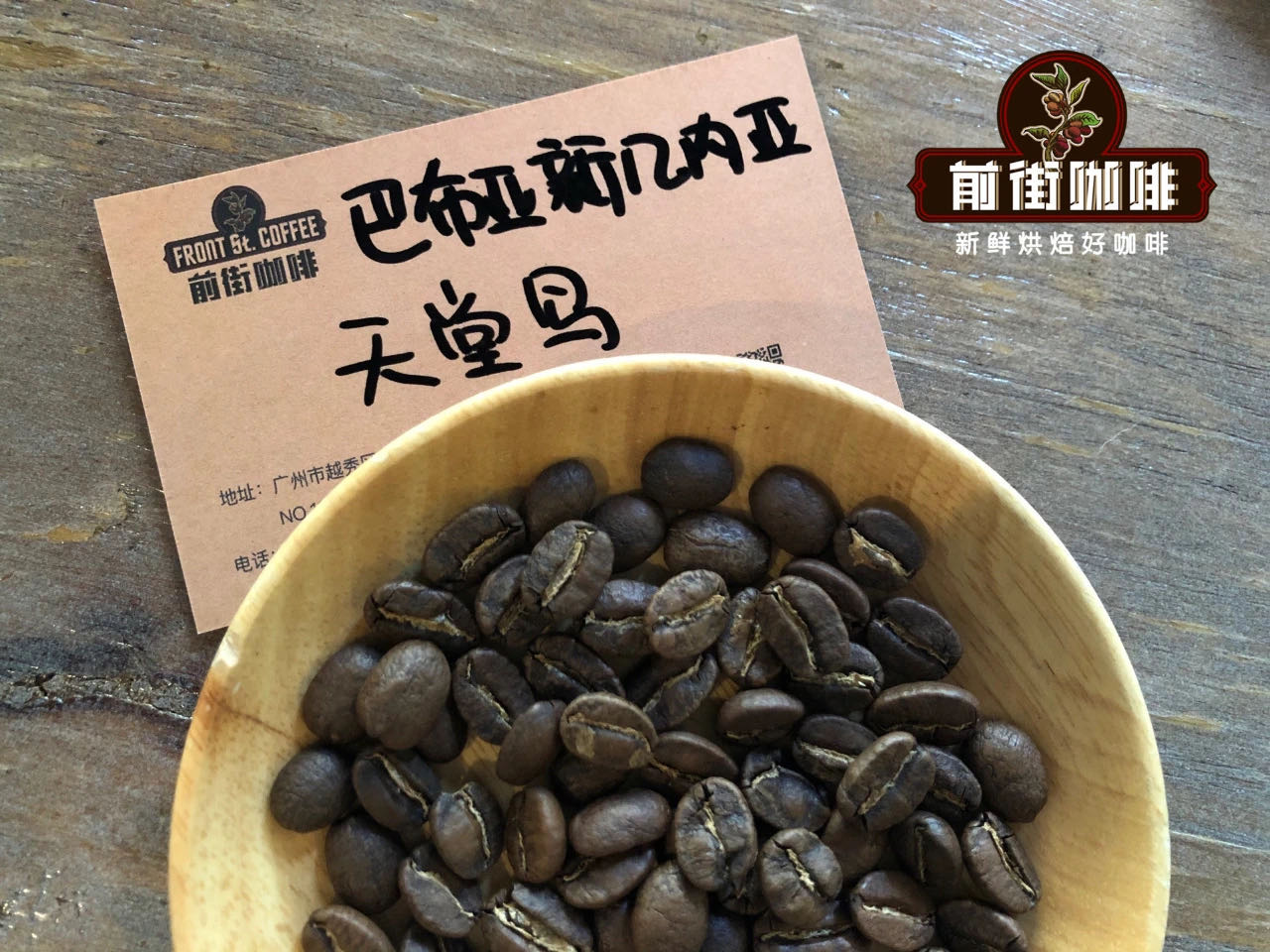
Country: Papua New Guinea
Producing area: Sigley Manor
Altitude: 1500m
Variety: Kaddura, Kaduai
Treatment: washing treatment
Flavor: cream, nuts, chocolate, soft acid
Qianjie Coffee, this Papua New Guinea coffee bean is called Little Blue Mountain Coffee because it was introduced from Jamaica to Papua New Guinea in 1931, and the local climatic conditions are similar to Jamaica. therefore, the flavor of Papua New Guinea coffee beans and Blue Mountain coffee beans are very similar, so this coffee is rated as the "Little Blue Mountain" of fine coffee. However, the flavor of Little Blue Mountain is different from that of Jamaican Blue Mountain Coffee. Qianjie believes that Jamaican Blue Mountain is a very mellow coffee flavor, while Papua New Guinea coffee is designed to be mellow and sour.
These are the coffee beans recommended by Qianjie about the Asian producing areas. Next, let's introduce the coffee beans from the African producing areas.
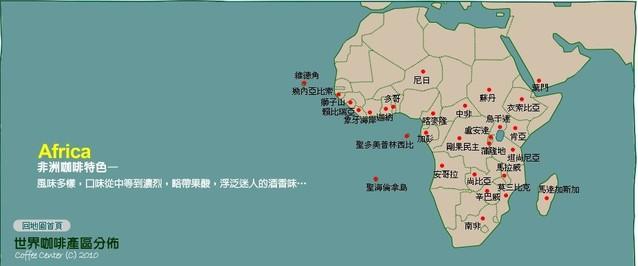
Recommendation of individual coffee beans in Africa
The most famous coffee producing area in Africa is Ethiopia. For example, Yega Chuefei in the front street coffee shop is very popular with coffee fans. At the same time, Yejashafi coffee beans are also called the most suitable coffee for beginners. Because it is relatively fresh and bright in the expression of flavor, it will not be too mellow and will not have the idea of adding milk. Secondly, like the sour coffee from Kenya, the sour coffee is also very popular with coffee fans. Then Qianjie Coffee will mainly introduce the coffee beans in these two producing areas.
Ethiopian coffee producing area
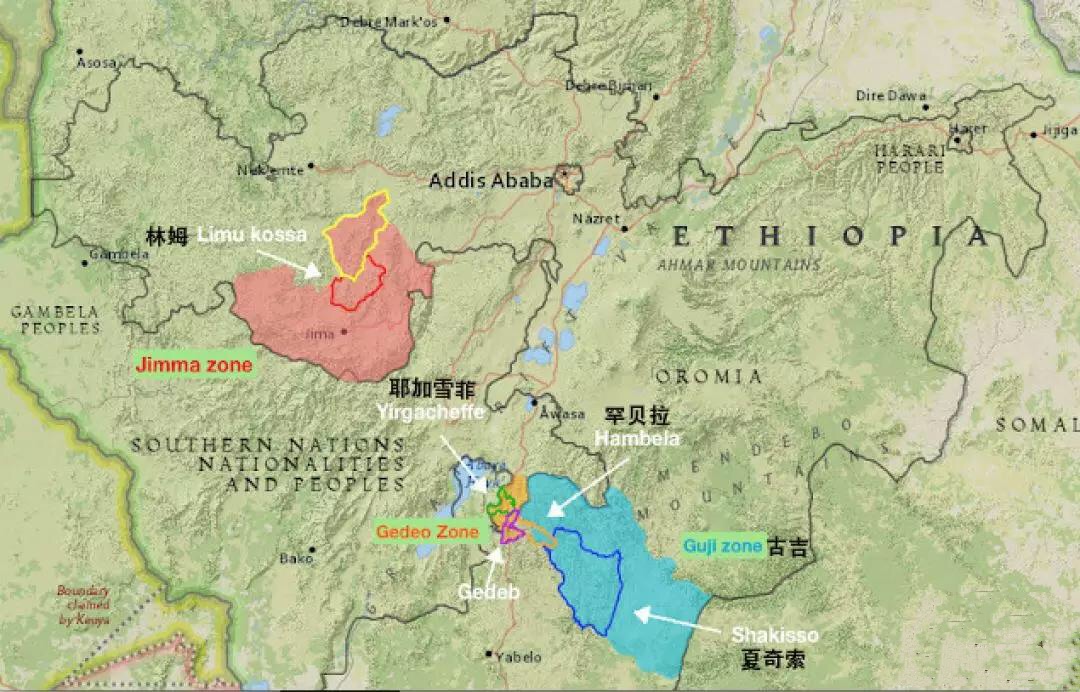
Ethiopian coffee flavor is mainly citrus citric acid, the most famous is the coffee beans in Esseyega Sheffield area, followed by many high quality coffee beans in Sidamo area, such as Sidamo Sakuran is also a good choice.
Front Street Coffee Essex plus Sheffield Sun Red Cherry Coffee beans
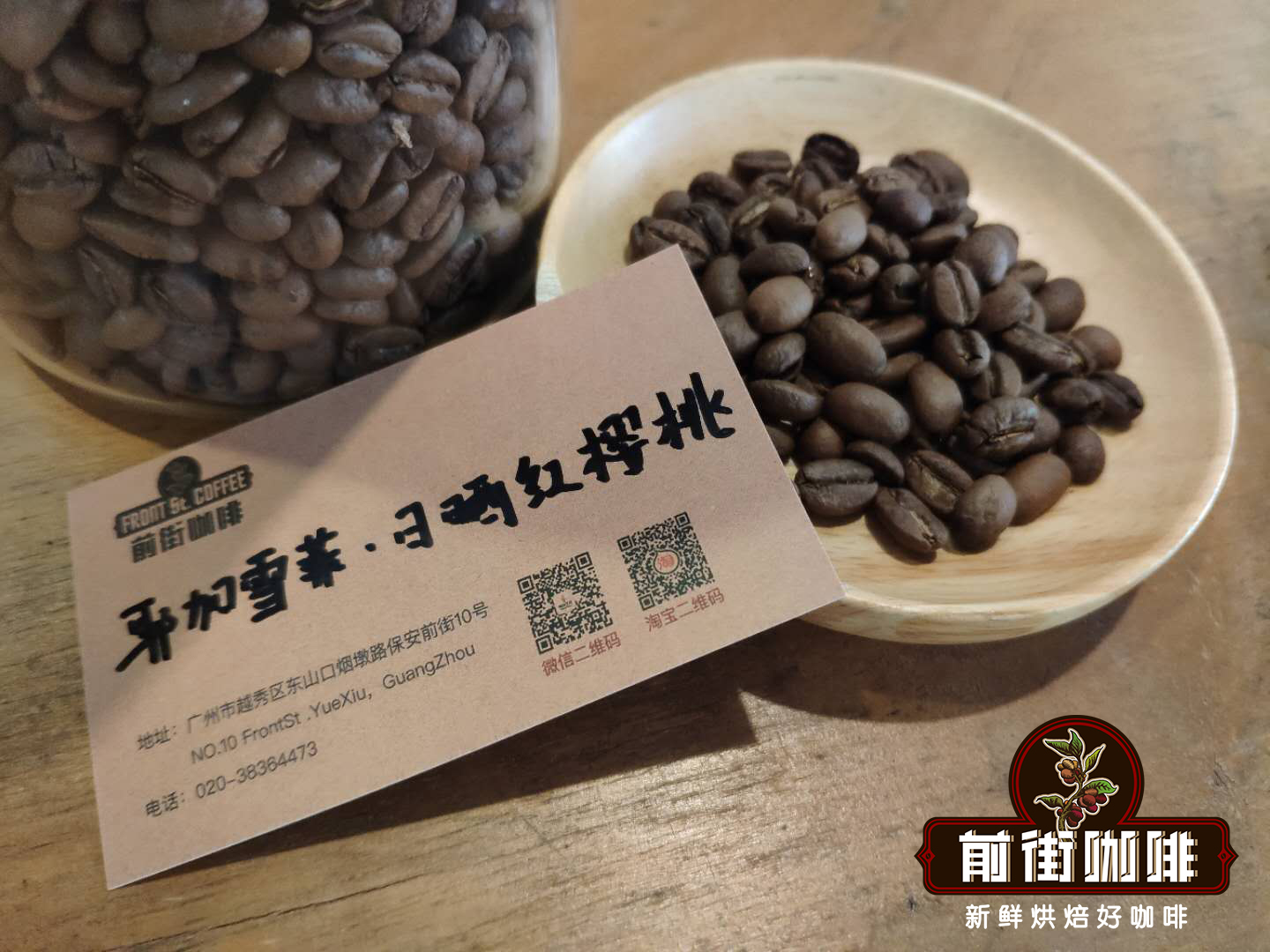
Country: Ethiopia Fiscal year: 2003
Production area: Yejia Shefei
Altitude: 2300m
Breed: Native species
Treatment method: sun treatment
Flavor: Berry, lemon, strawberry, fermented bouquet
Front Street Coffee This sun-dried red cherry coffee bean is made from 100% mature coffee beans, so it is full of aroma, sweet and fermented in flavor.
The origin of this coffee bean comes from the "Red Cherry Project" jointly initiated by local coffee farmers in Ethiopia and Dutch trader Trabocca. It aims to improve the quality of small-scale farm coffee and increase farmers 'income. To pick fully ripe coffee fruit, not only to pick the fruit of full red maturity, but also to harvest by hand, but this is only the most basic requirements. There are also corresponding requirements for coffee bean treatment.
Front Street Coffee Ethiopia Fruit Tintin Cooperative Coffee Bean
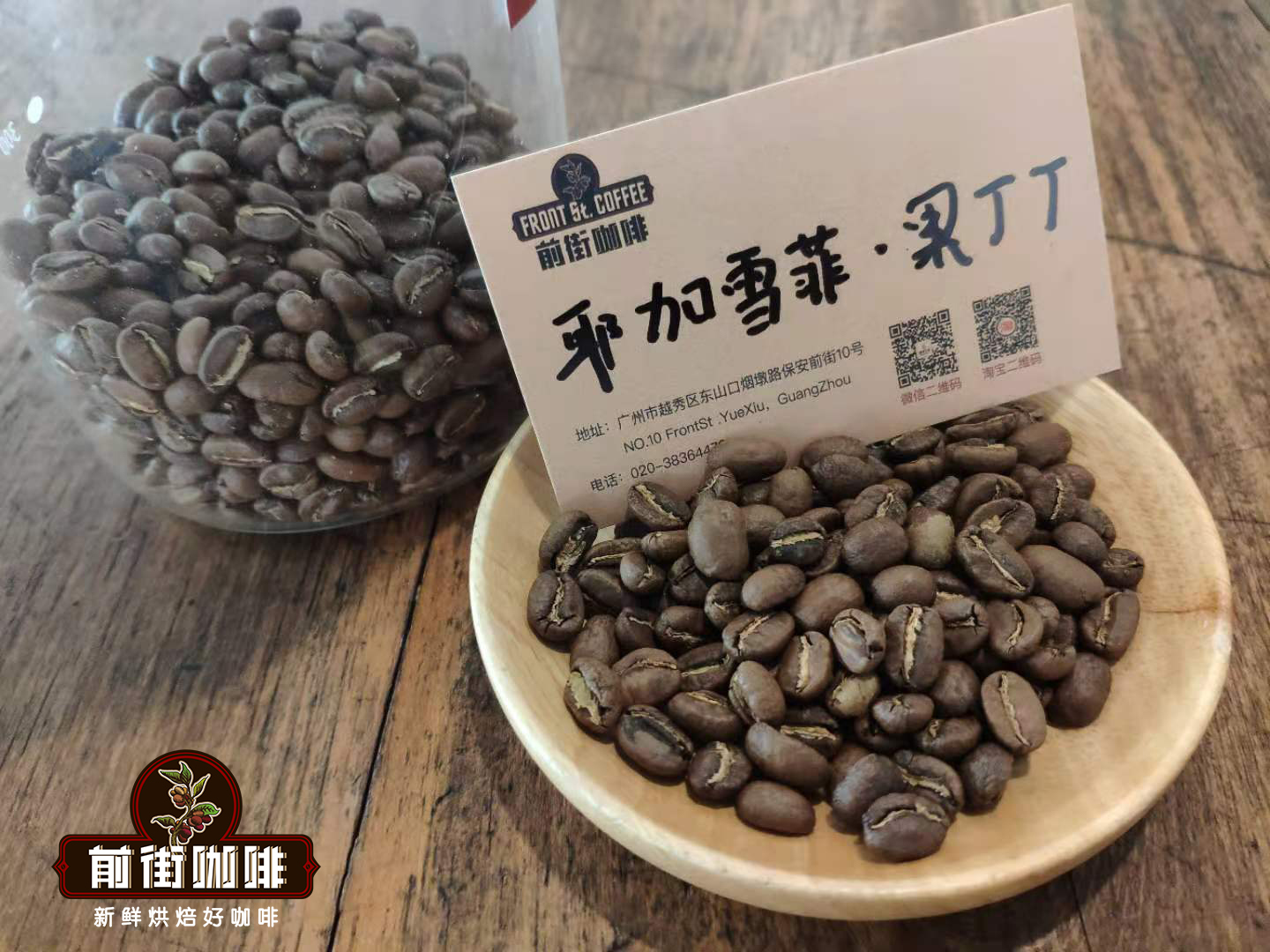
Country: Ethiopia
Producing area: Yega Xuefei
Altitude: 1900-2300m
Variety: native species
Treatment: washing treatment
Flavors: tropical fruits, cream, honey, berries, citrus
According to Qianjie, the Guotintin Cooperative was originally part of the Waka Cooperative of the YCFCU of the Yega Sheffield Union. It became an independent Guotintin Cooperative in 2012 and now has more than 300 smallholder members. At the same time, it is precisely because Guodingding Village is the first independent village area, and many small farmers were also members of the Waka Cooperative, so the technology of producing coffee is not to mention. The natural flavor of the coffee beans is excellent.
Front Street Coffee Essex Dharma Sakui 4.0 Coffee beans
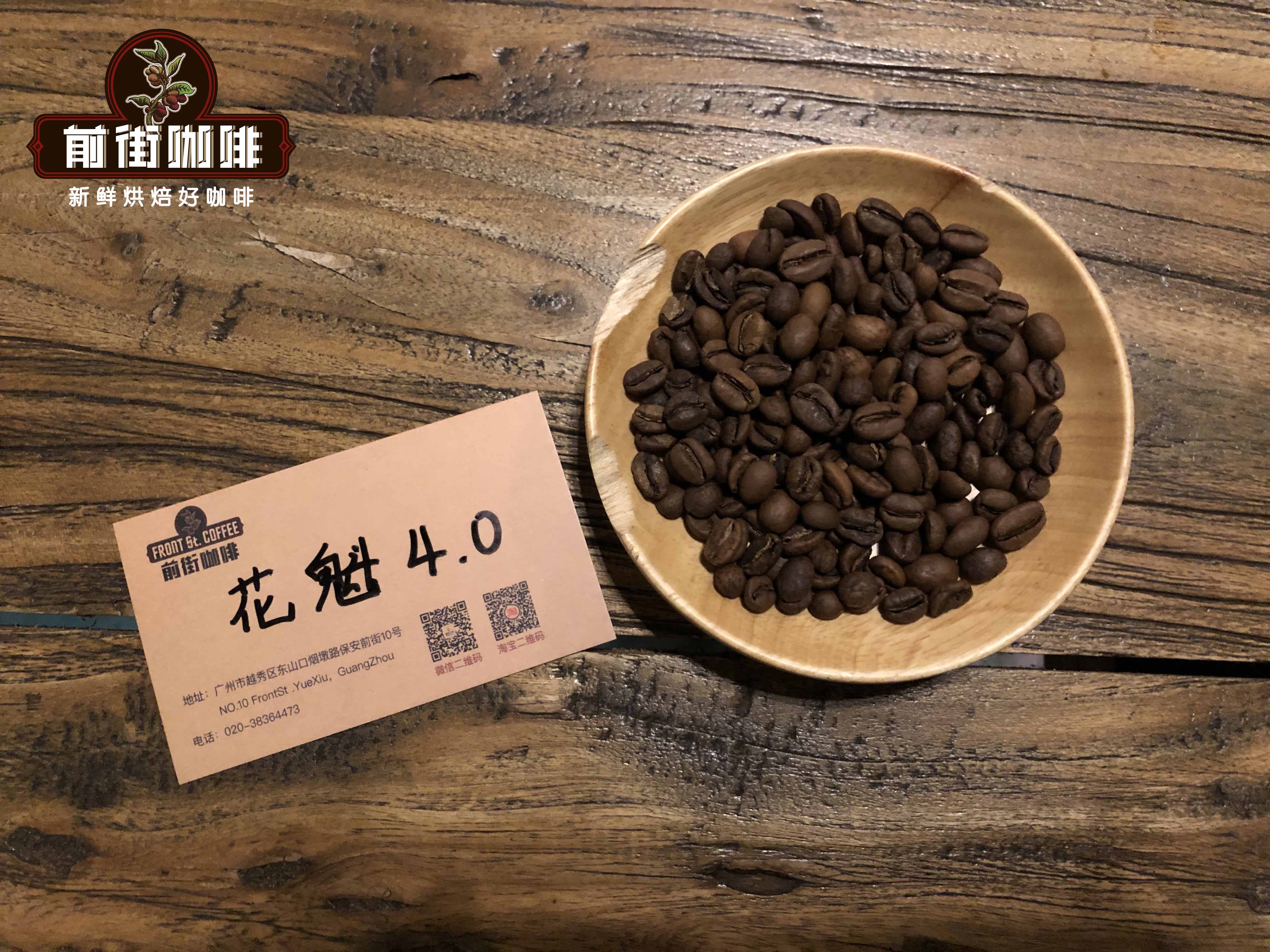
Country: Ethiopia
Producing area: Sidamo
Altitude: 2250-2350m
Variety: native species
Treatment: sun treatment
Flavor: berries, scented tea, honey, lemon, black tea
This is because the bean itself is a nameless adzuki bean. In 2017, Ethiopian raw bean manufacturer dw sent the coffee to the TOH (the Taste Of Harvest) raw bean competition organized by the African Coffee Association. A batch from the "Buku Abel" processing plant won the TOH Ethiopia championship with its strong strawberry and cream aroma. This bean is the literal translation of "Hanbela" in English.
The reason why it is called "Sakuran" in China is that this batch of raw beans was introduced by Beijing's raw bean traders. Because of the identity of the champion, it was named "Sakuran".
Kenyan coffee producing area
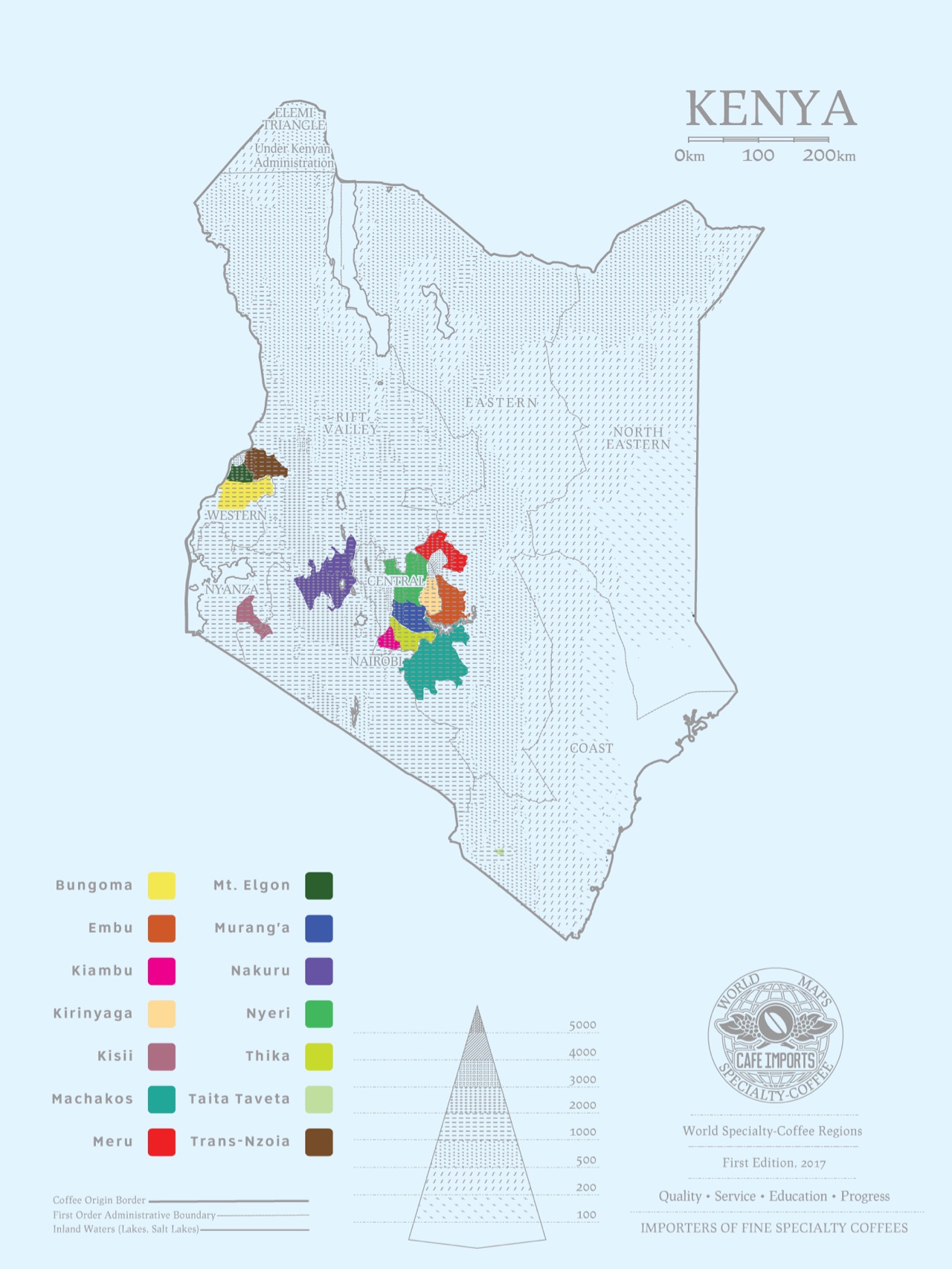
The above is the more famous Ethiopian Yega Sheffield coffee bean recommendation, the next front street coffee to introduce the flavor of the cherry coffee beans from Kenya bar.
Front Street Coffee Kenya Sasini Coffee Bean
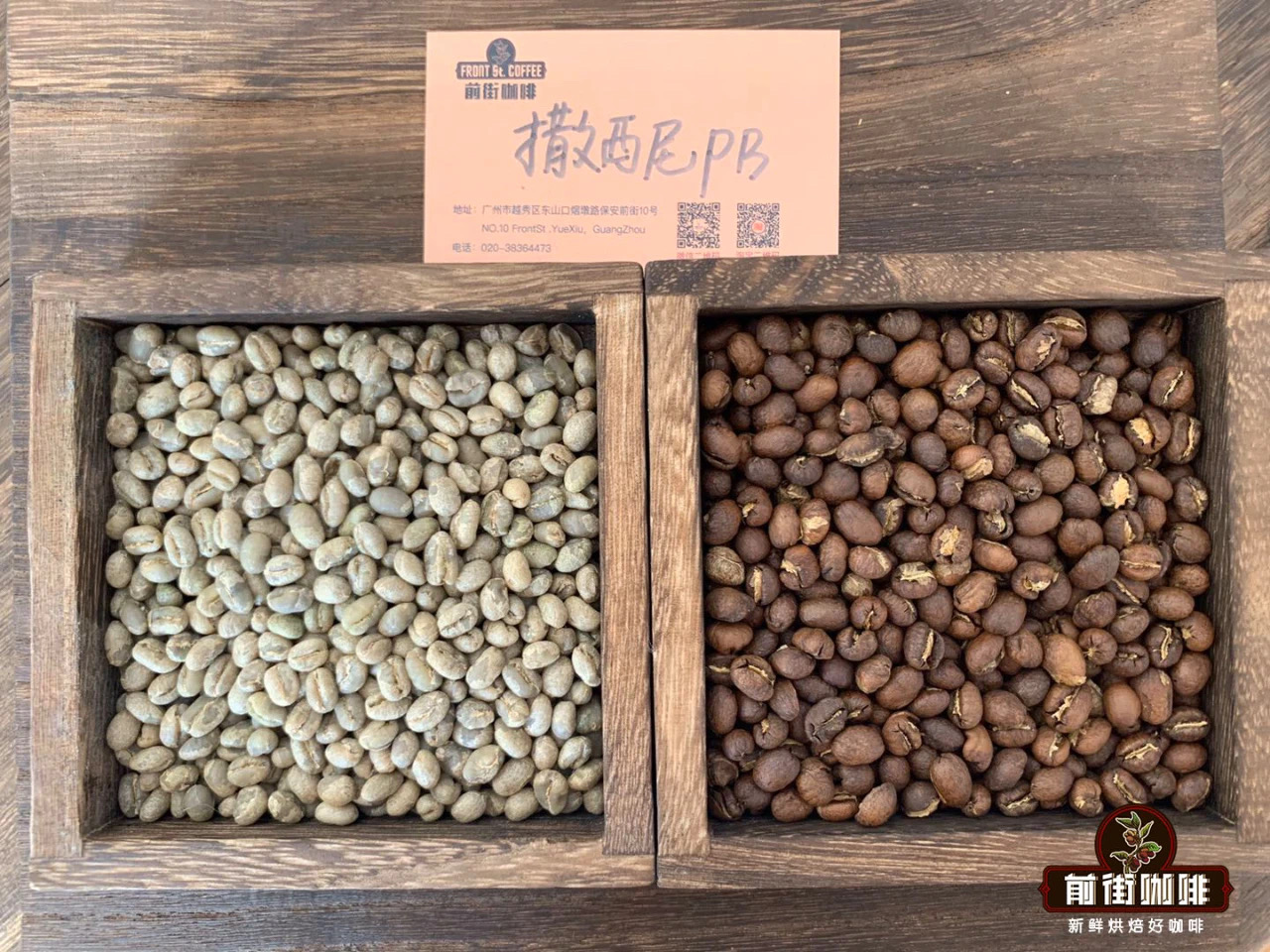
Country: Kenya
Origin: Sasini
Altitude: 1900m
Breed: SL28
Treatment method: washing treatment
Flavor: Tomato, fruit, berry
SASINI Limited was originally established in 1952 and was one of the first coffee and tea companies established after Kenya's independence. It has obtained many certifications such as UTZ, Rainforest Alliance and Kenya Bureau of Standards Diamond mark.
Front Street Coffee Kenya Asalia Coffee Bean
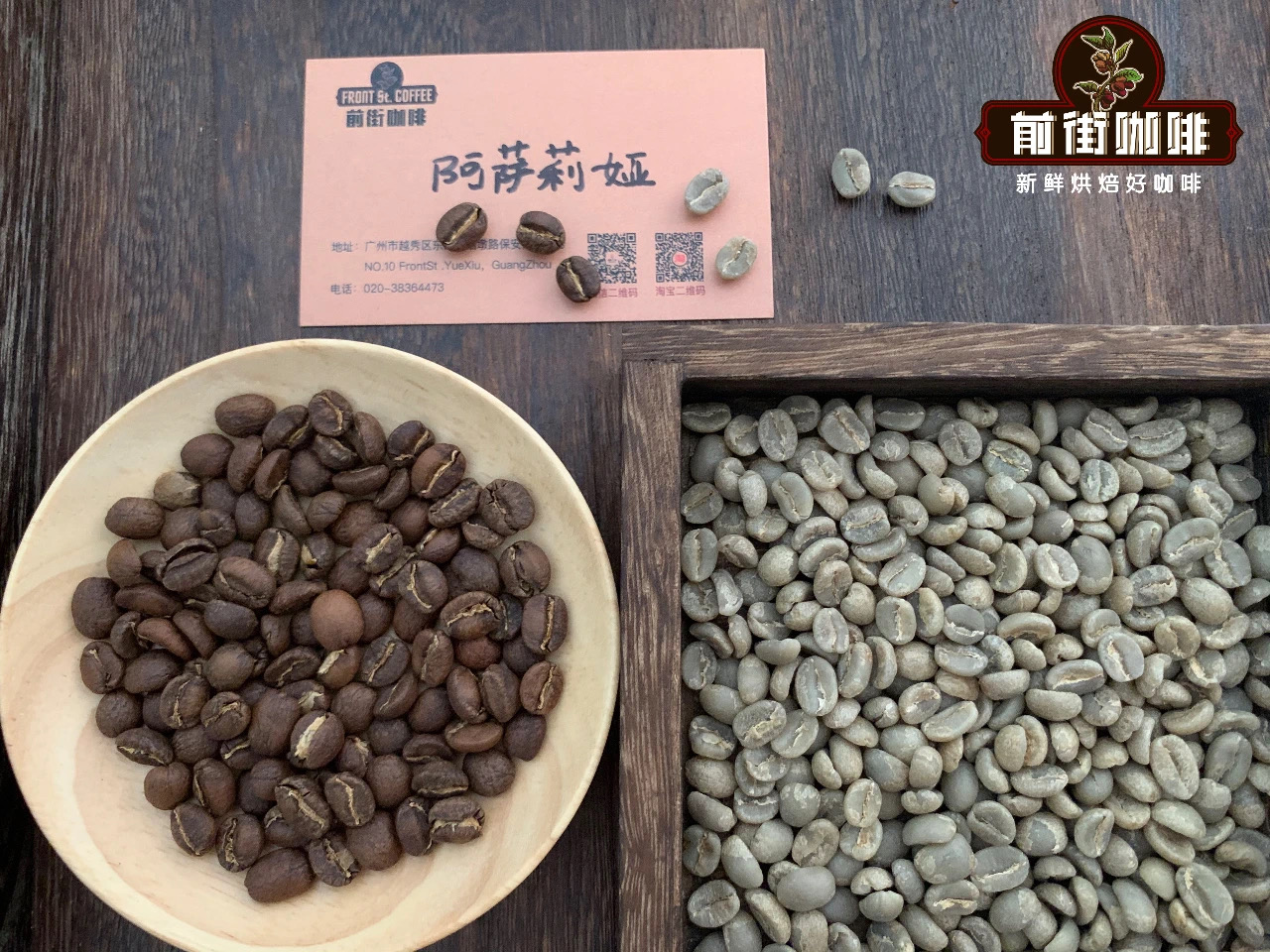
Country: Kenya
Production area: Asali (Honey processing Plant)
Altitude: 1550-1750m
Variety: SL28,SL34
Treatment method: 72 hours washing treatment
Flavor: Sydney, black plum, brown sugar, virgin fruit, Brin
The front street coffee in Asaria, Kenya, is treated with 72-hour water washing, which was developed in Kenya, where coffee beans need to be fermented for a long time at low temperatures and finally dried and dehydrated. The coffee beans treated here can have a brighter, cleaner and fuller flavor. That's why Kenyan coffee is famous for its extreme acidity, which is thanks to this treatment.
Recommendation of Latin American coffee beans
Finally, Qianjie would like to recommend coffee beans from Latin America. The more representative coffee producing areas in Latin America are Brazil, which produces the largest coffee in the world, and Costa Rican coffee, which is full of sweet flavor. And Colombia's full-bodied nutty cocoa flavor coffee, then Qianjie Coffee will introduce the following coffee bean representatives of these three producing areas.
Coffee producing areas in Brazil
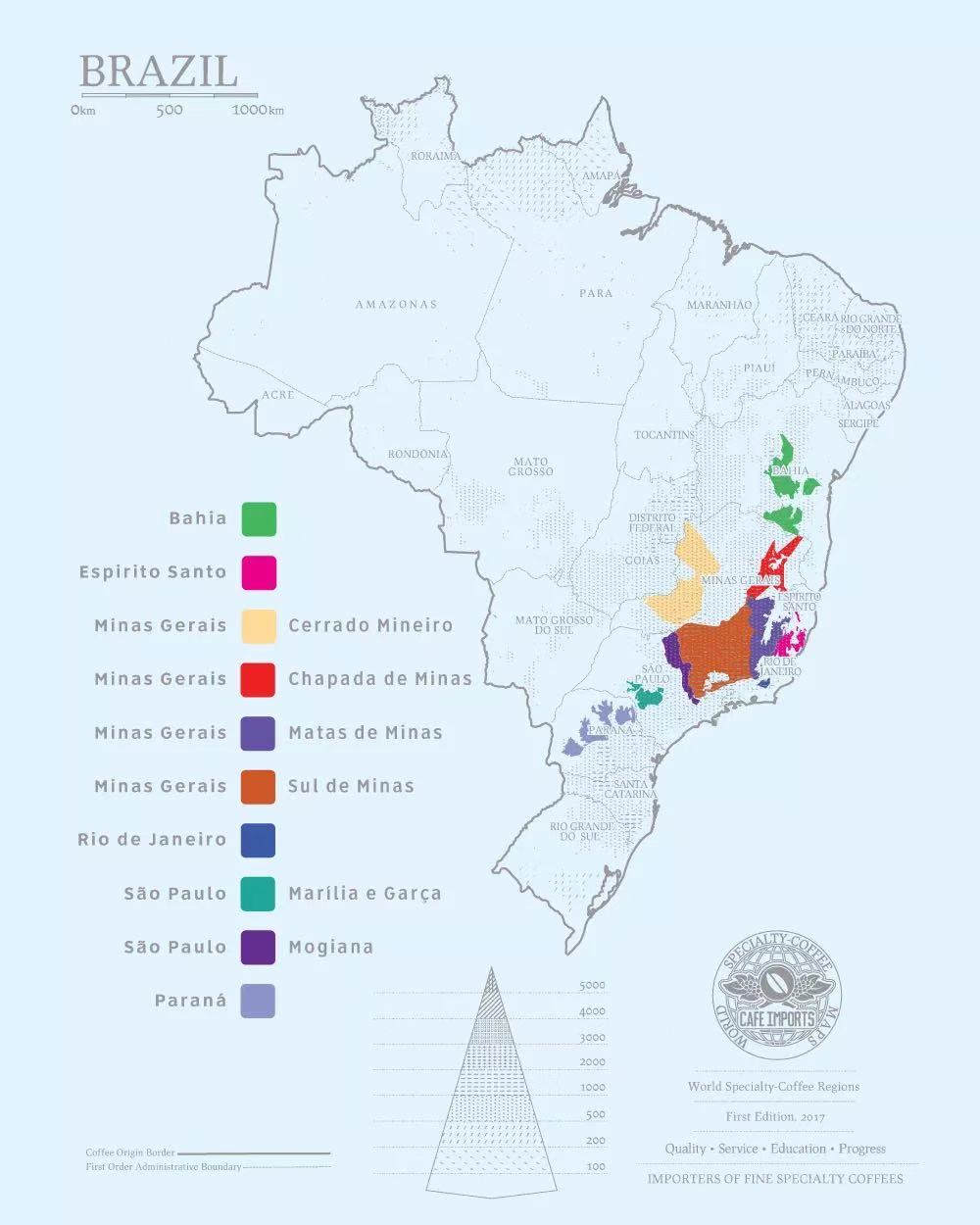
Brazil mainly grows bourbon varieties of coffee beans, so it also has an excellent sweet taste in the performance of coffee flavor. The next coffee bean is the one that Qianjie thinks best represents the flavor of Brazilian coffee.
Qianjie Coffee Queen Manor of Brazil
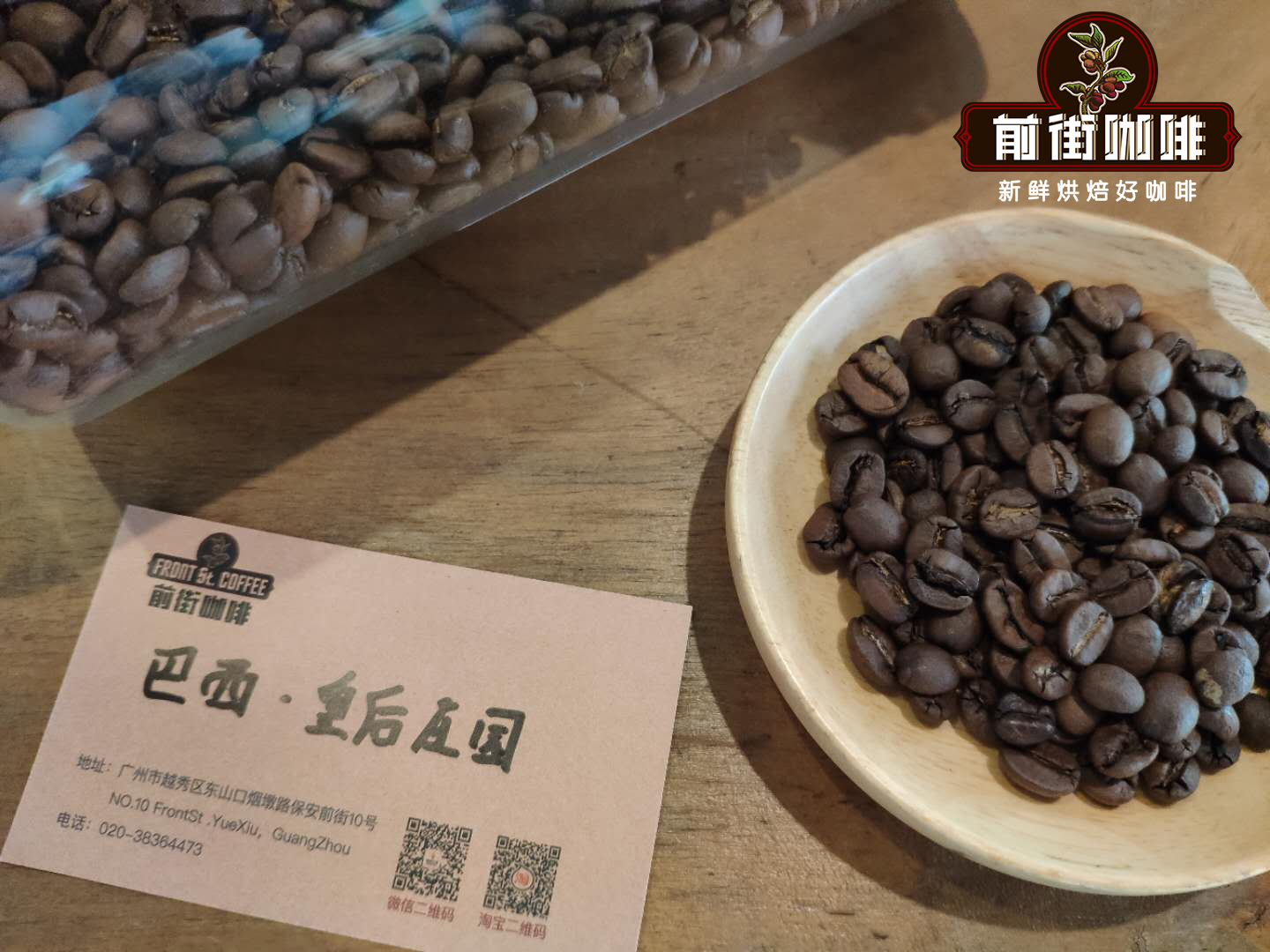
Country: Brazil
Producing area: Morgiana
Altitude: 1400-1950
Variety: yellow bourbon
Treatment: half-sun
Flavor: nuts, creamy peanuts, fermented fruit, sucrose
Queen's Manor mainly exports bourbon varieties of boutique coffee. The environmental protection is quite thorough, because the terrain is high, the non-plain terrain, therefore cannot use the machine to do the harvest, the complete manual harvest fruit. And plant low-yield and high-quality bourbon seeds as the essence of high-quality Brazilian coffee. Therefore, Qianjie believes that the coffee of the manor best reflects the high-quality coffee of Brazil.
Costa Rican coffee producing area
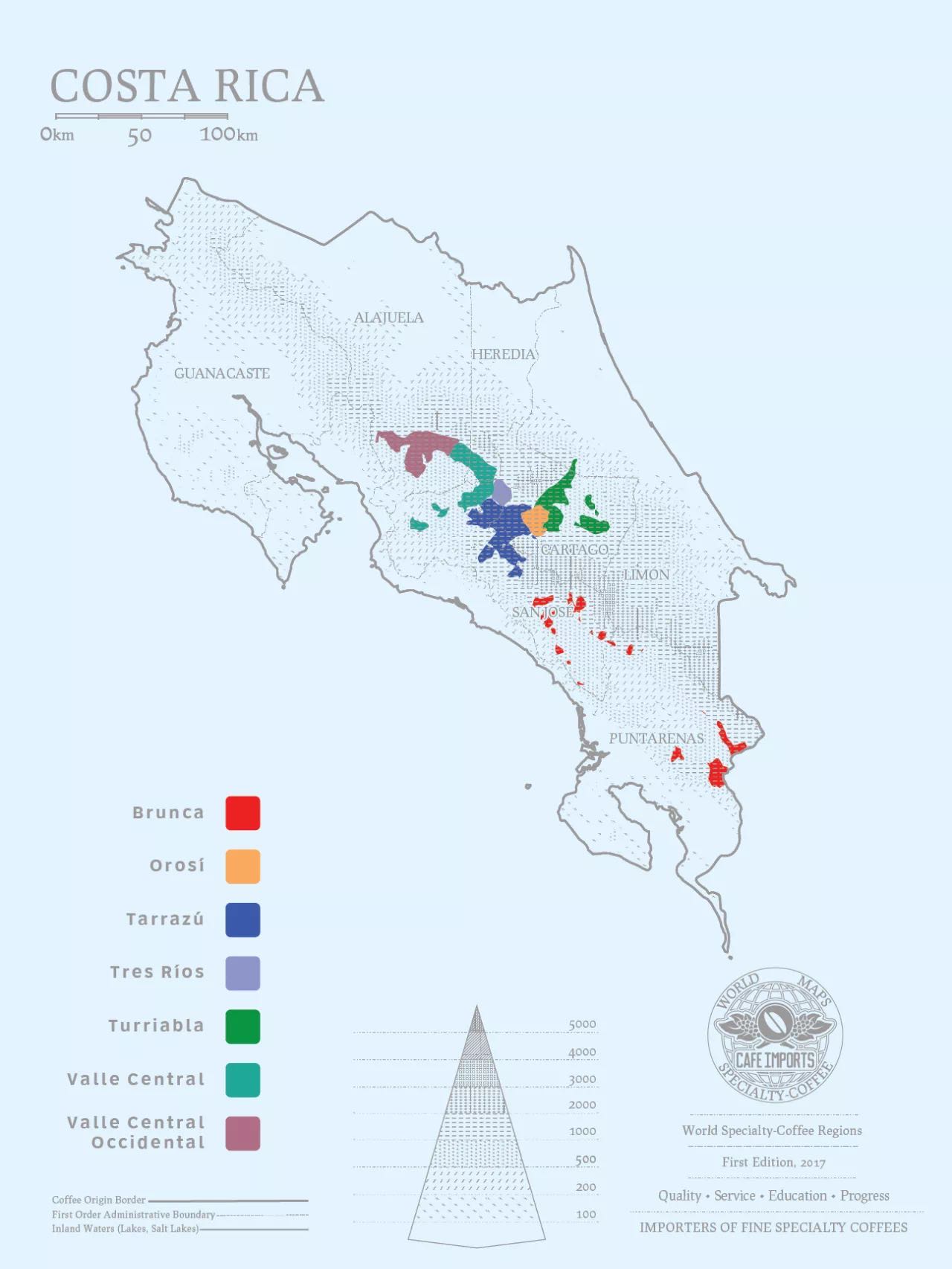
The treatment of coffee beans in Costa Rica mainly uses honey treatment, this is because the local coffee farms are on the mountain, it is very inconvenient to send to the coffee processing plant at the foot of the mountain, and the coffee fruit is easy to be dampened along the way. The price of bean collectors is also squeezed in the form of exploitation, so when coffee farmers develop and deal with unique honey-treated coffee beans, they produce and sell their own products and increase profits. And with the improvement of Costa Rican coffee technology, there are also many special honey-treated coffee beans on the market. For example, the musician series coffee series launched by Costa Rica's Carnett Manor in the front street store is very popular with coffee fans on the front street.
Front Street Coffee Costa Rican musicians Series Mozart Coffee beans
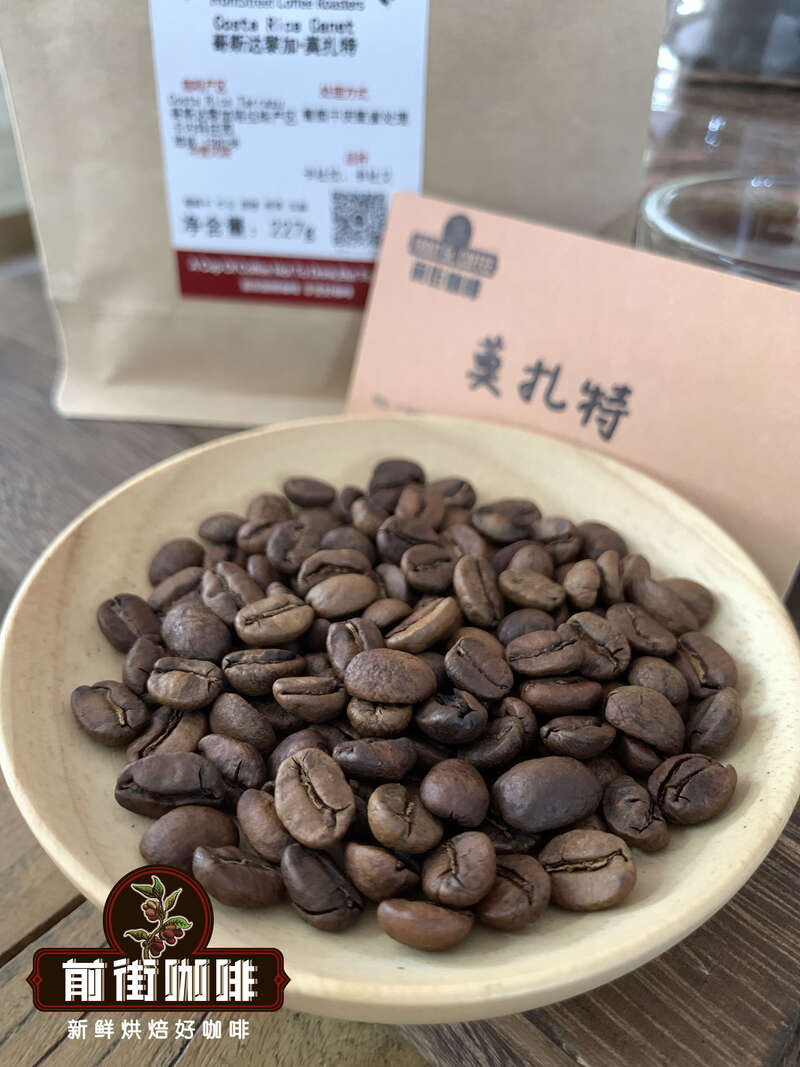
Country: Costa Rica
Producing area: Tarazhu
Altitude: 1800m
Variety: Kaddura, Kaduai
Treatment: raisin honey treatment
Flavor: raisin sour berry blossom, fermented wine
Mozart is known as the prodigy Mozart of the classical music collection, and is famous for his gorgeous classical music, so the gorgeous aroma of Mozart coffee beans refers to Mozart's elegant floral aroma, white flower aroma like orange blossom, which can also be felt when brewing in front of the street, while the gorgeous taste refers to Mozart coffee with more dark berries, raisins and traces of red berries. In the middle and later stage, you can still feel the acid value of plums and the sweetness of gummy bears. After cooling down, it still retains the fragrance and sweetness of the flowers. The flavor is very unique, and you can really feel the gorgeous taste.
Front Street Coffee Costa Rican musicians Series Bach Coffee beans
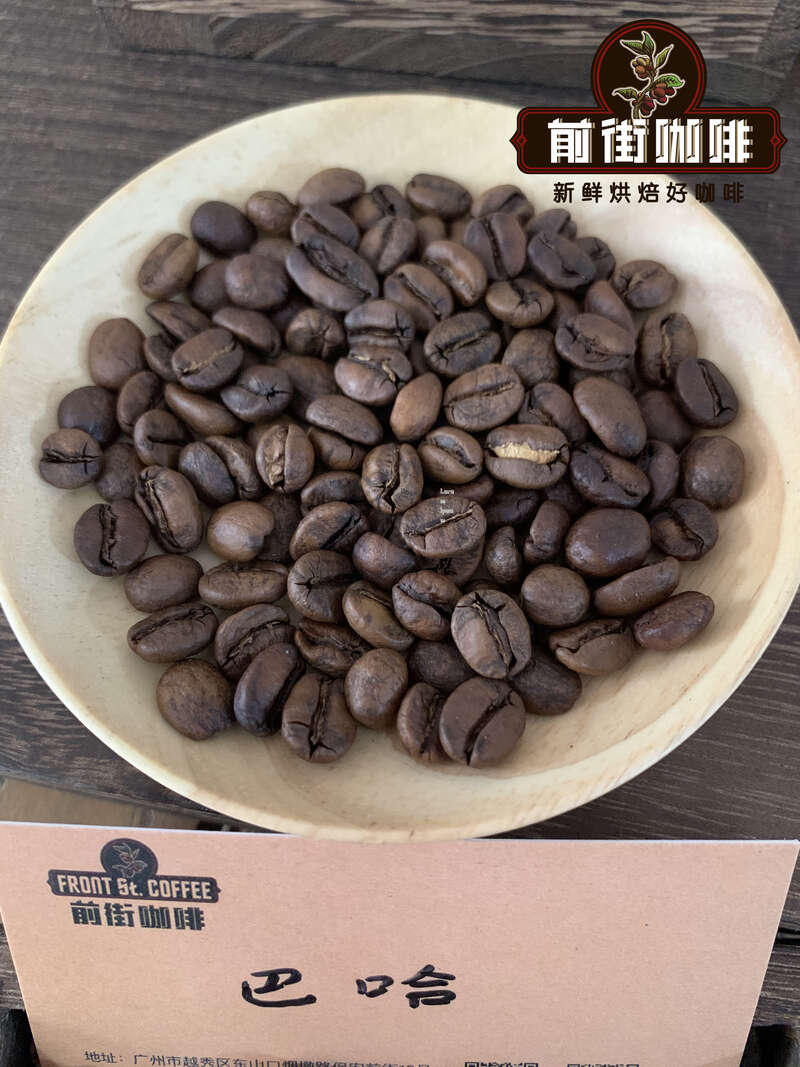
Country: Costa Rica
Producing area: Tarazhu
Altitude: 1950m
Variety: Kaddura
Treatment: raisin honey treatment
Flavor: fermented wine, berry fruit and tea notes
Bach's music is exquisite, rich and organized at the same time. This dried coffee bean has aromas of strawberries, blackberries, raisins and other fruits. As soon as the front street is cooked, there is an obvious aroma of flowers and fruit, and after the entrance, there is also a strong aroma of fruit and a sense of sour and sweet, with a slight wine aroma in the middle and back, like red wine. After cooling down, it has a sweet aroma of candied fruit, and the aroma of the wine is more obvious, and you can even feel the flavor of plum wine. Such a delicate taste is really like the music of Bach, and Qianjie thinks that every mouthful of Baja coffee seems to be in the splendor and rigor of baroque aesthetics.
Front Street Coffee Costa Rican musicians Beethoven Coffee beans
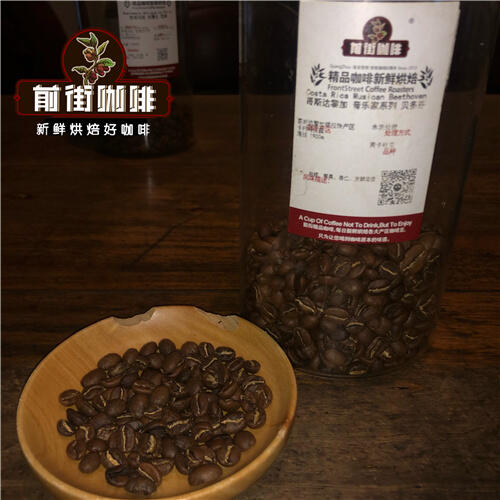
Country: Costa Rica Fiscal year: 2003
Production area: Tara Pearl
Altitude: 1800-1950 m
Breeds: Kadura, Kaduai
Treatment method: washing treatment
Flavor: Citrus, berry, floral and lightly fermented
Romantic classical music is the most well-known than Beethoven, and drink coffee beans associated with Beethoven music, its flavor naturally not to mention, dry fragrance has obvious red berries, of which strawberries are the most obvious, and exudes flowers. Floral, nectar sweet and green grape aromas when cooked. The Beethoven coffee brewed in front street has a sweet and sour taste of green grapes and cranberries after the entrance. The whole is clean and smooth. Red berries are more noticeable when it cools down. There are even coffee fans who taste it in the front street shop and say it is a coffee with summer romantic feelings.
Colombia coffee-producing region
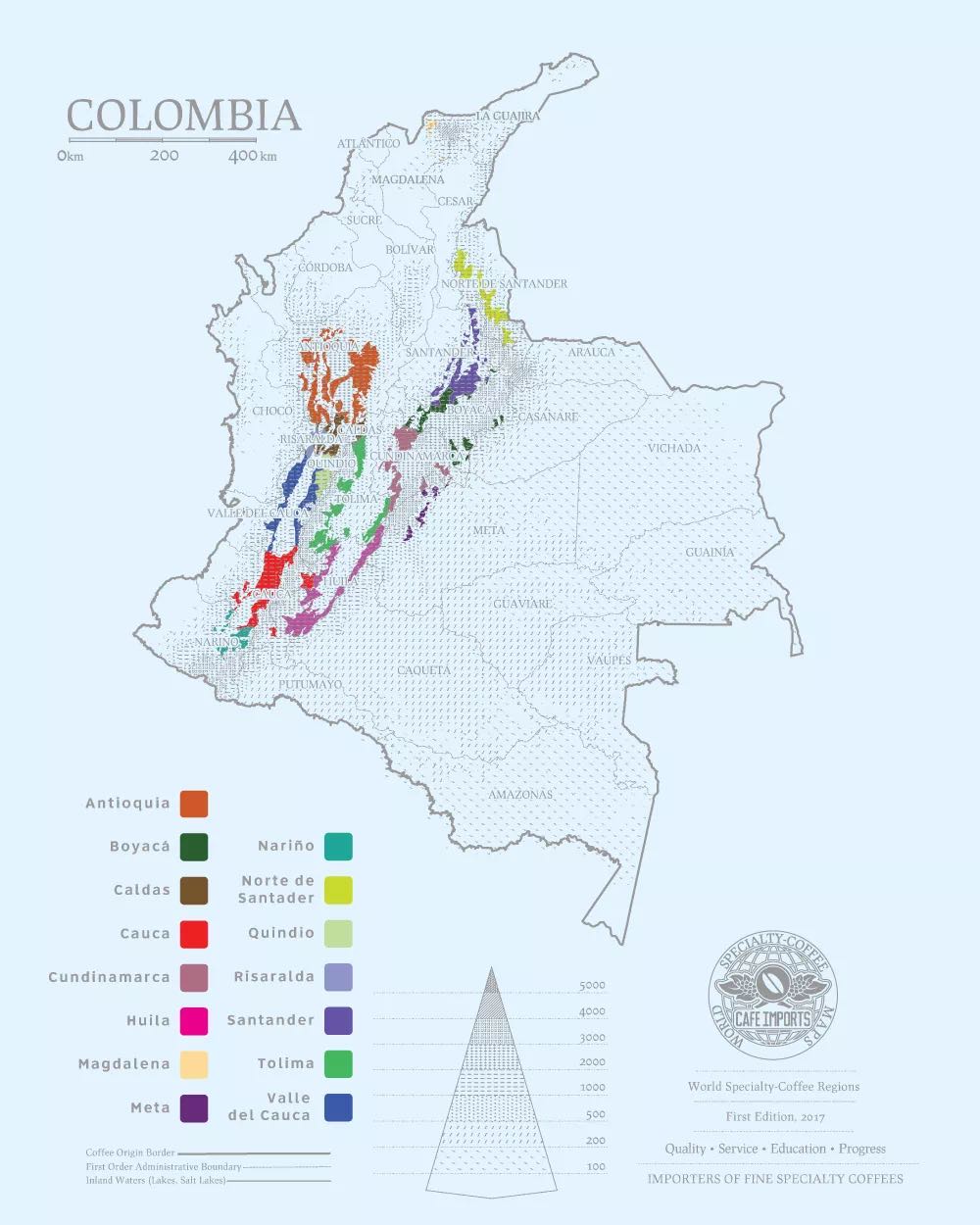
Colombian coffee is the second largest coffee exporter in the world, and it is also the country that exports the most Arabica coffee beans. In Colombia, there are also many coffee beans treated with special treatment, and the flavor expression is also very amazing. Next, let's recommend some special coffee beans in Colombia.
Front Street Coffee Columbia San Jose Manor Coffee beans
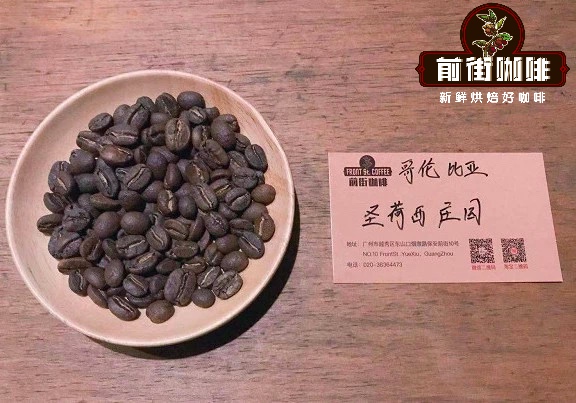
Country: Colombia
Producing area: Caldas
Altitude: 1750m
Variety: Castillo
Treatment method: refined water washing rum barrel fermentation treatment
Flavor: rum, wine heart chocolate, tropical fruit, maple syrup
The owner of the San Jose Manor can be said to be the founder of the barrel fermentation process. according to Qianjie, she is the third-generation hostess of the San Jose Manor, because she is committed to promoting Colombian coffee. produced by breaking through and trying to find a different way in the wave of traditional production and modern boutique coffee. On this premise, she had an idea when she was brewing rum with her husband and wondered whether putting raw coffee beans in oak barrels would absorb the oak flavor like the original wine and achieve the effect of barrel brewing.
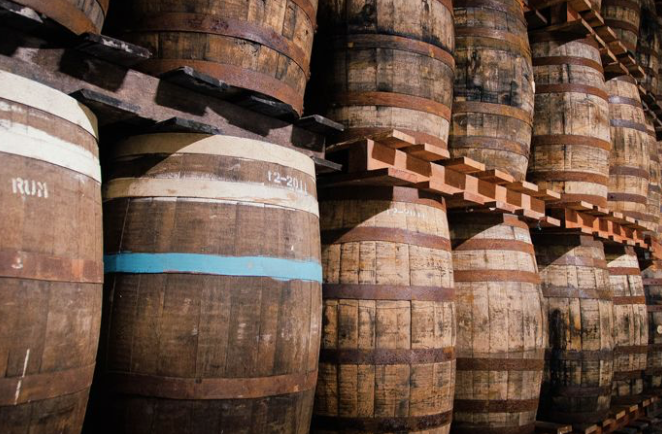
Under this idea, the hostess Monsalve Botero began to put raw beans into rum barrels of different ages for low-temperature fermentation in 2013, and compared the fermentation flavor produced at different times, through this experiment, the most suitable bucket and fermentation time length were selected. Finally, we successfully found the most suitable combination to achieve a special and satisfactory flavor, so as to produce rum barrel fermented coffee which is different from traditional rum washing.
Front Street Coffee Columbia Flower Moon Night Coffee beans
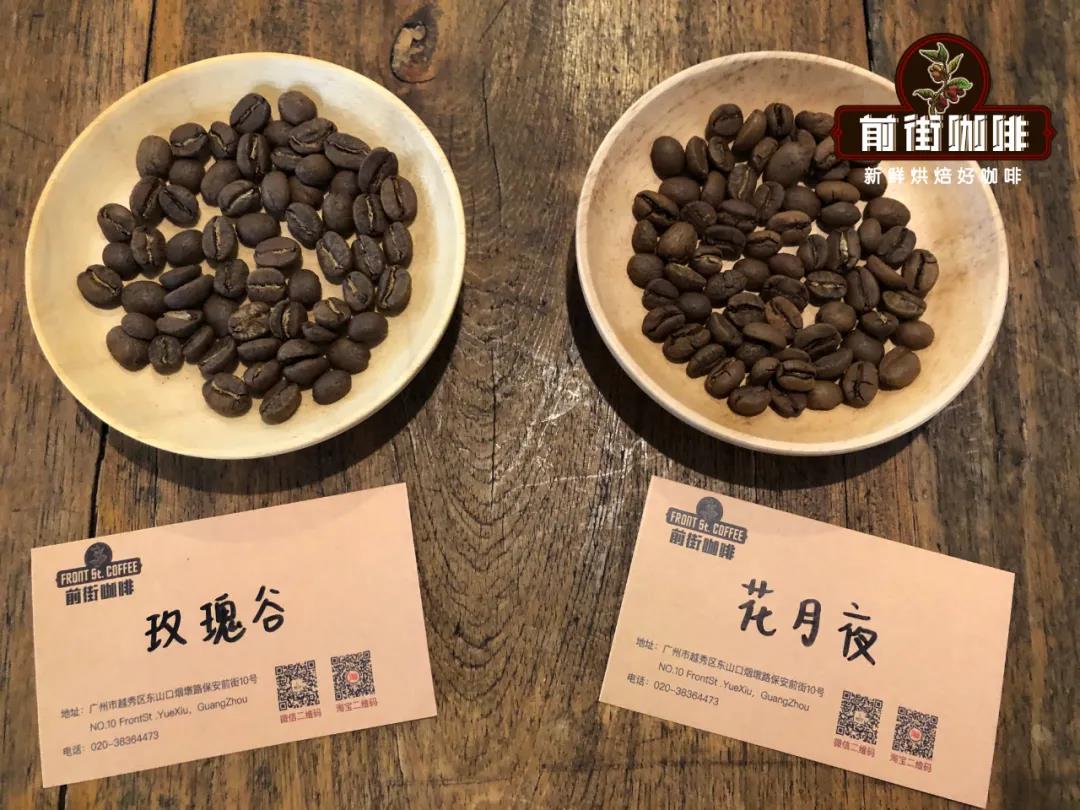
Country: Colombia
Production area: Huilan (Esteogatine Farm)
Altitude: 1800m
Variety: Kaddura
Treatment: anaerobic solarization
Flavor: strawberry, peach, fermented wine, chocolate, fruit wine
This moonlight coffee bean in Qianjie comes from the anaerobic sun-dried coffee beans developed by Ramirez, the owner of Astorgatin Farm. According to Qianjie, he comes from a coffee-growing family and has been engaged in coffee production since the age of 18. He used to work as a coffee professional in Acevedo, and later had the opportunity to buy this farm called Astorgatin Farm.
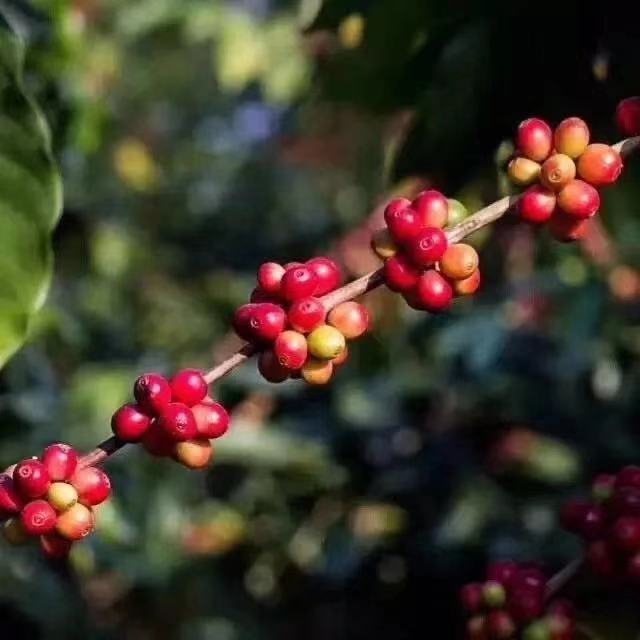
And this farm grows Kaddura, our common coffee variety. Kaddura is a natural variety of bourbon, often with refreshing fruit acidity and a hint of sweetness. At the same time, it also sets the tone for Hua Moon Night Coffee. And as early as three years ago, the former landowner of Gatine Farm launched the special treatment program and told Ramirez how to carry out the special treatment project, and Ramirez changed the fermentation process that could not achieve the effect because of his enthusiasm for coffee cultivation.
He put the coffee fruit into a sealed fermentation bucket and used low temperature fermentation to prolong the whole fermentation time, using 15-20 days of fermentation to make the coffee flavor more possible, and under the gestation of time, slow drying can make coffee cherries develop the best water activity in this process, so that the flavor develops well, and the raw beans can last longer in the cycle of the production season. After fermentation, the coffee fruits are dried in the sun. And this treatment is what Qianjie now calls anaerobic sunbathing.
Front street coffee Columbia Rose Valley Coffee beans
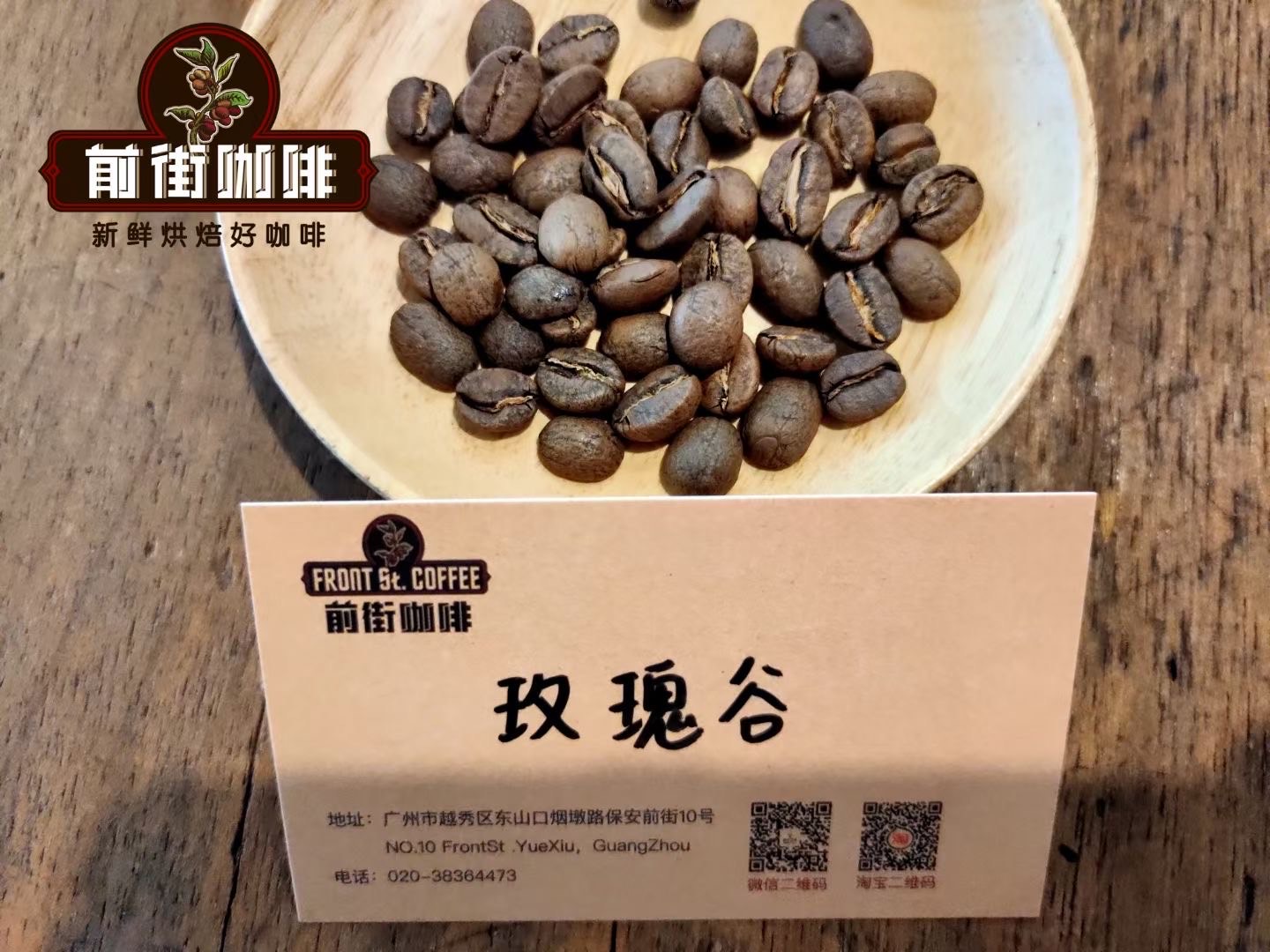
Country: Colombia
Producing area: Tande (Dashu Manor)
Altitude: 1700m
Variety: Kaddura
Treatment method: anaerobic double enzyme washing treatment
Flavor: honey, juicy, strawberry
Rose Valley Coffee comes from the Dashu Manor in Santander, Colombia. Farmer Vargas has been growing coffee on the Dashu Farm for 20 years. In the Dashu Farm, only the fully ripe coffee fruits with bright red appearance are picked, and the defective floating beans are removed by washing, twice anaerobic fermentation and fermentation in a special enzyme group. At the same time, the owner of the manor also pays great attention to the drying process of coffee beans, avoiding excessive temperature during drying and adopting a slow drying method. That is, the dual enzyme anaerobic treatment mentioned in the previous street.
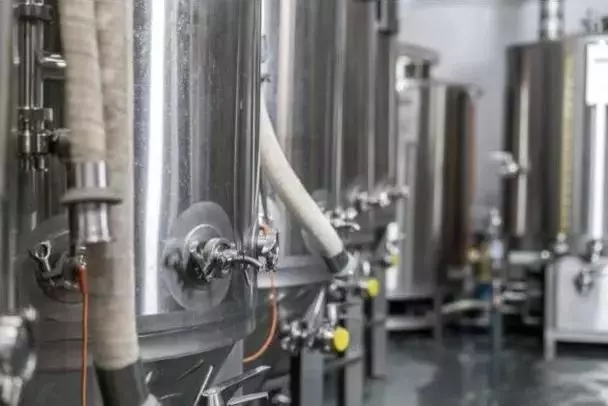
Its process is to remove floating beans by washing, and finally put the processed coffee beans into a closed container, inject carbon dioxide to exhaust oxygen, slow down the decomposition rate of sugar in coffee pectin in an oxygen-free environment, and PH decreases more slowly, prolonging fermentation time, so as to develop a better sweetness and more balanced flavor of coffee.
The above are the more distinctive individual coffee beans recommended by Qianjie Coffee. I hope the above article can help novice coffee fans choose their favorite coffee bean flavor.
For more boutique coffee beans, please add private Qianjie coffee on Wechat. WeChat account: kaixinguoguo0925
Important Notice :
前街咖啡 FrontStreet Coffee has moved to new addredd:
FrontStreet Coffee Address: 315,Donghua East Road,GuangZhou
Tel:020 38364473
- Prev

The most common five kinds of coffee beans in coffee shops introduce what coffee beans are the most classic
Professional coffee knowledge exchange more coffee bean information please follow the coffee workshop (Wechat official account cafe_style) in the coffee shop, our most common single coffee beans, there are the following, including the veteran of the single world-Blue Mountain Coffee, and the single world of evergreen-Brazil. Brazil is the world.
- Next
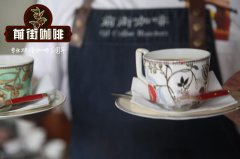
Individual coffee bean brand recommendation _ why the name of single coffee is so long?
Professional coffee knowledge exchange more coffee bean information please follow the coffee workshop (Wechat official account cafe_style) simply said that a single coffee bean is only one kind of beans without mixing other kinds of beans. Like Colombia, Blue Mountains, Brazil, Manning. Depending on the origin and baking method, some of these beans will be bitter, some will be sour and can be selected according to their personal taste.
Related
- Detailed explanation of Jadeite planting Land in Panamanian Jadeite Manor introduction to the grading system of Jadeite competitive bidding, Red bid, Green bid and Rose Summer
- Story of Coffee planting in Brenka region of Costa Rica Stonehenge Manor anaerobic heavy honey treatment of flavor mouth
- What's on the barrel of Blue Mountain Coffee beans?
- Can American coffee also pull flowers? How to use hot American style to pull out a good-looking pattern?
- Can you make a cold extract with coffee beans? What is the right proportion for cold-extracted coffee formula?
- Indonesian PWN Gold Mandrine Coffee Origin Features Flavor How to Chong? Mandolin coffee is American.
- A brief introduction to the flavor characteristics of Brazilian yellow bourbon coffee beans
- What is the effect of different water quality on the flavor of cold-extracted coffee? What kind of water is best for brewing coffee?
- Why do you think of Rose Summer whenever you mention Panamanian coffee?
- Introduction to the characteristics of authentic blue mountain coffee bean producing areas? What is the CIB Coffee Authority in Jamaica?

